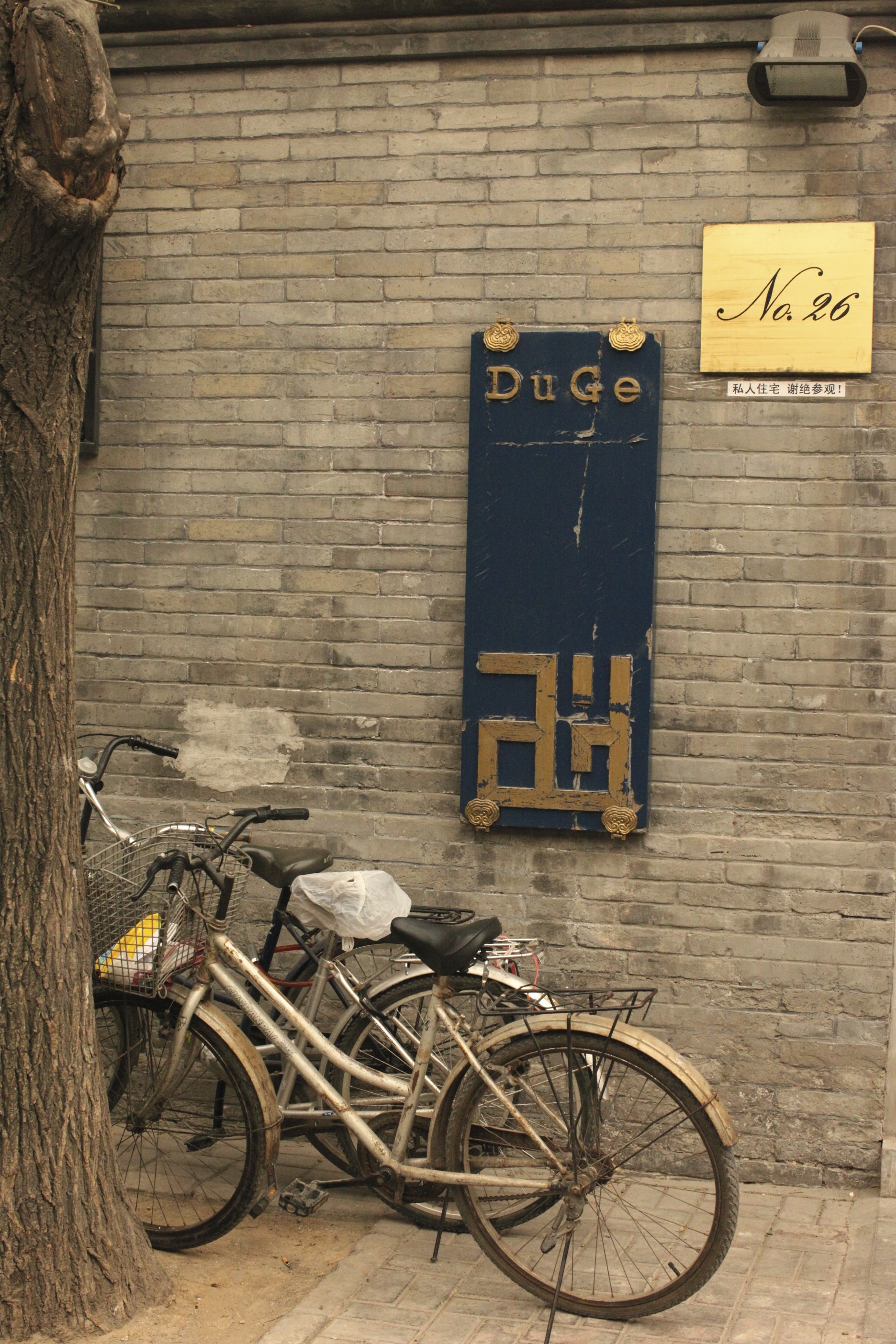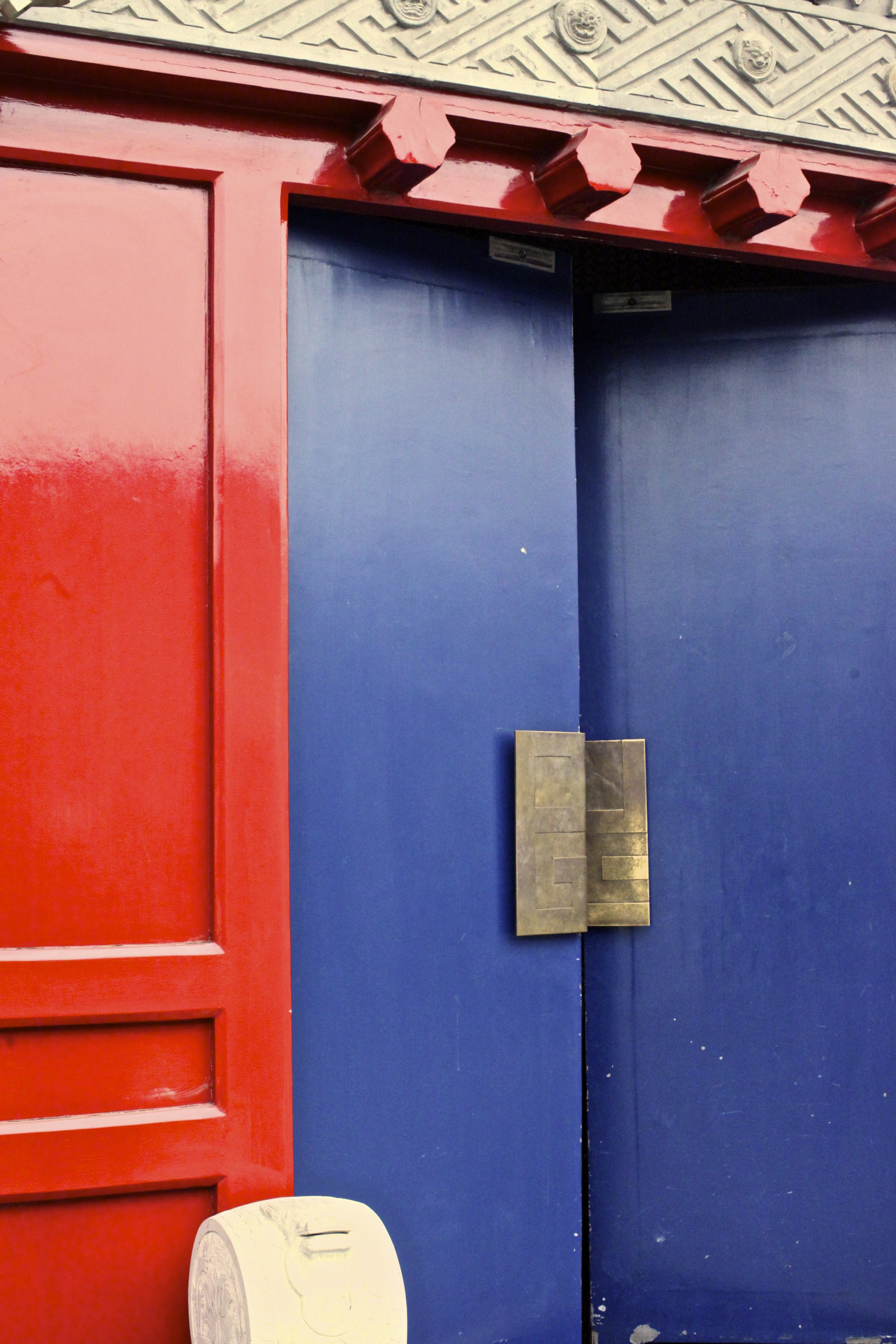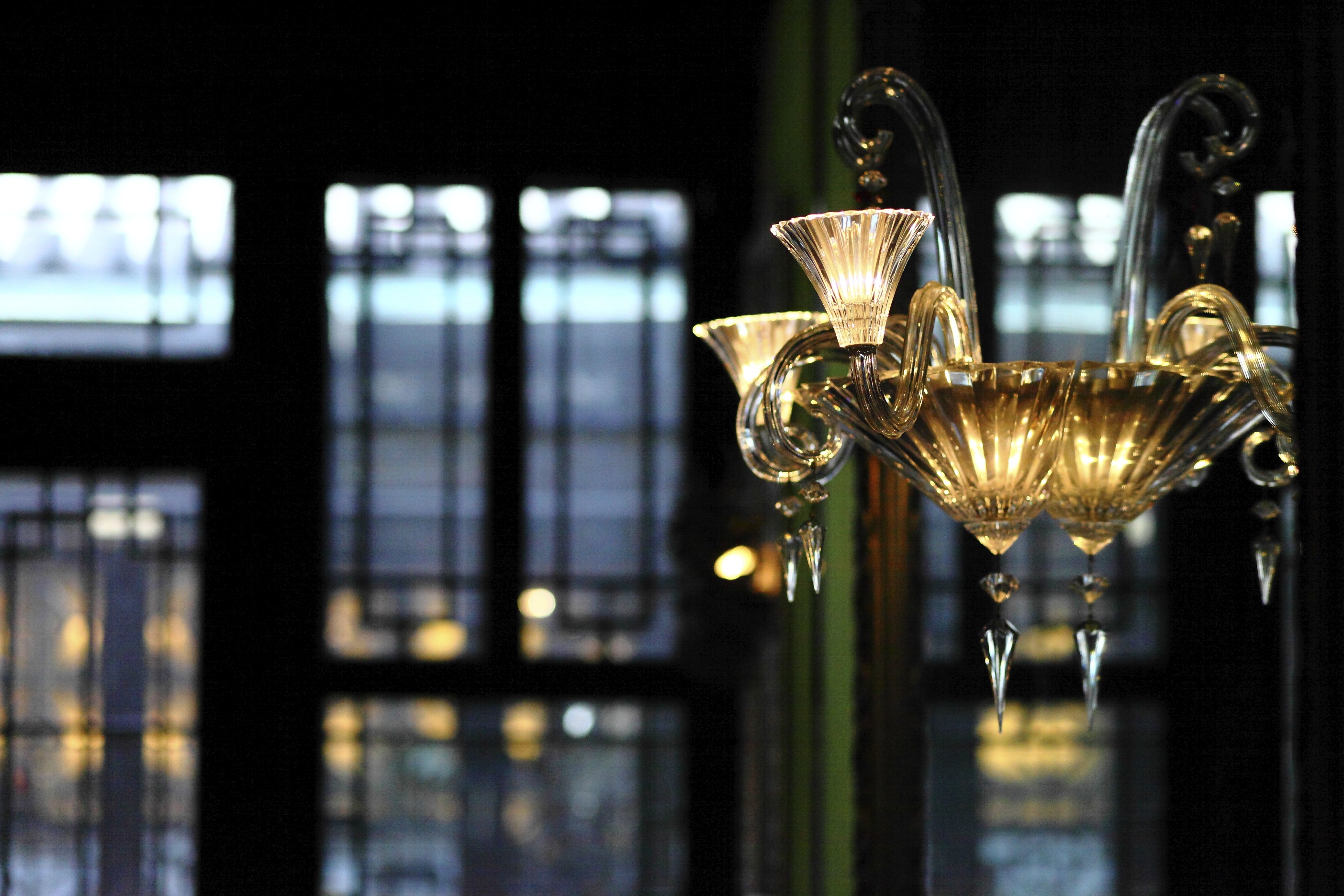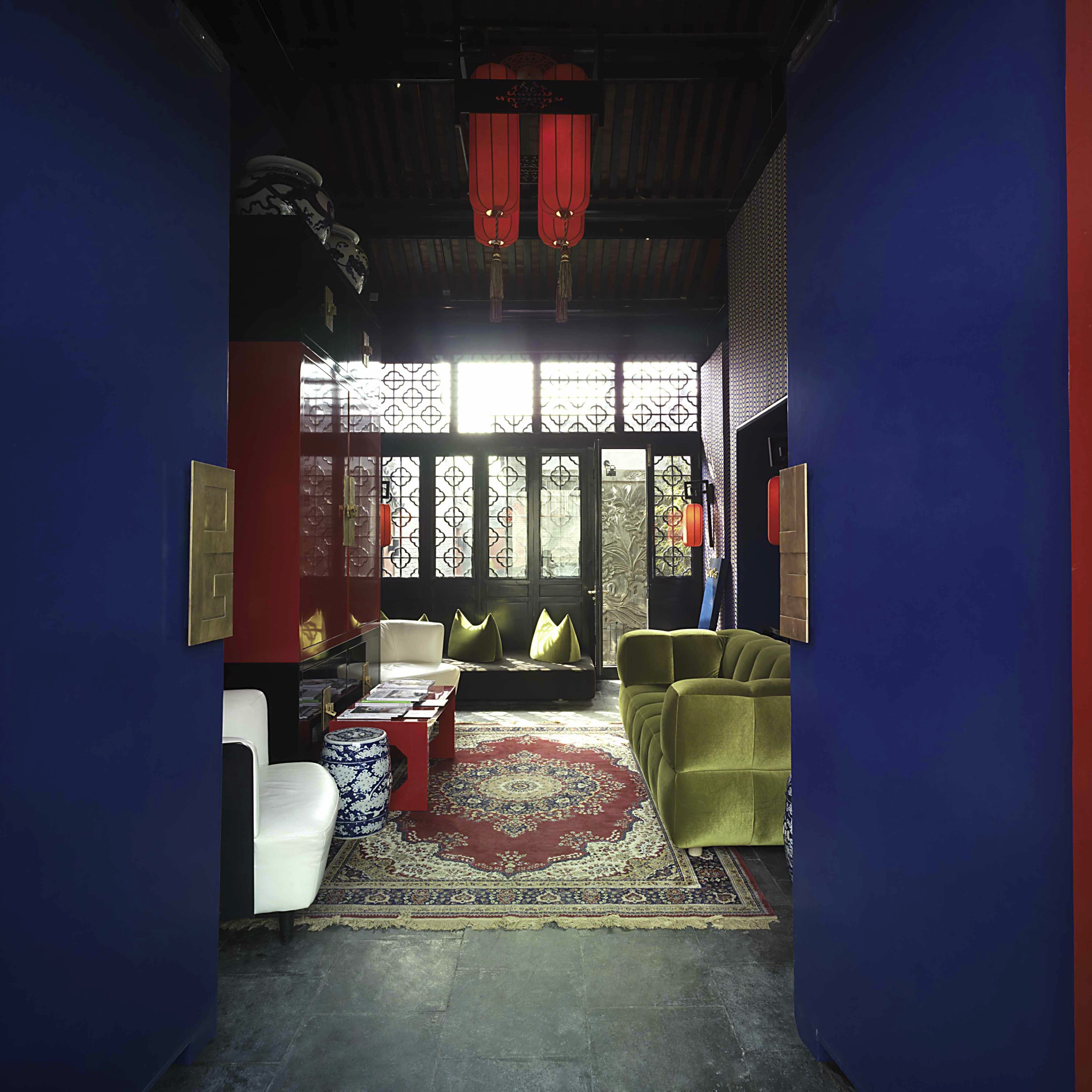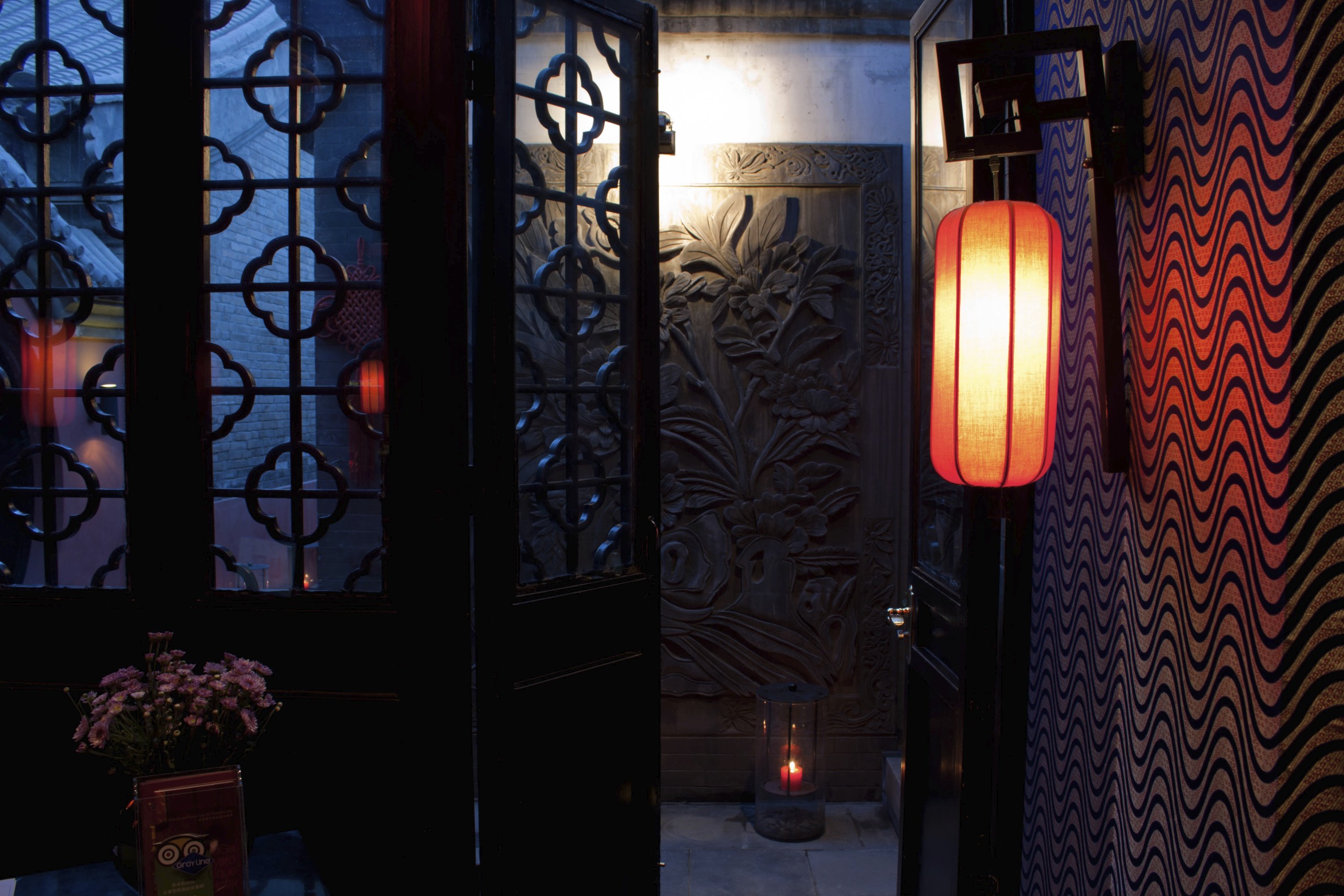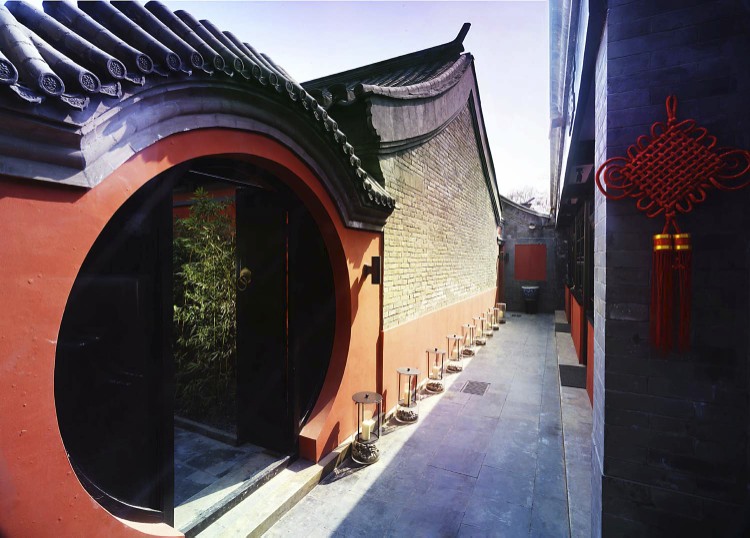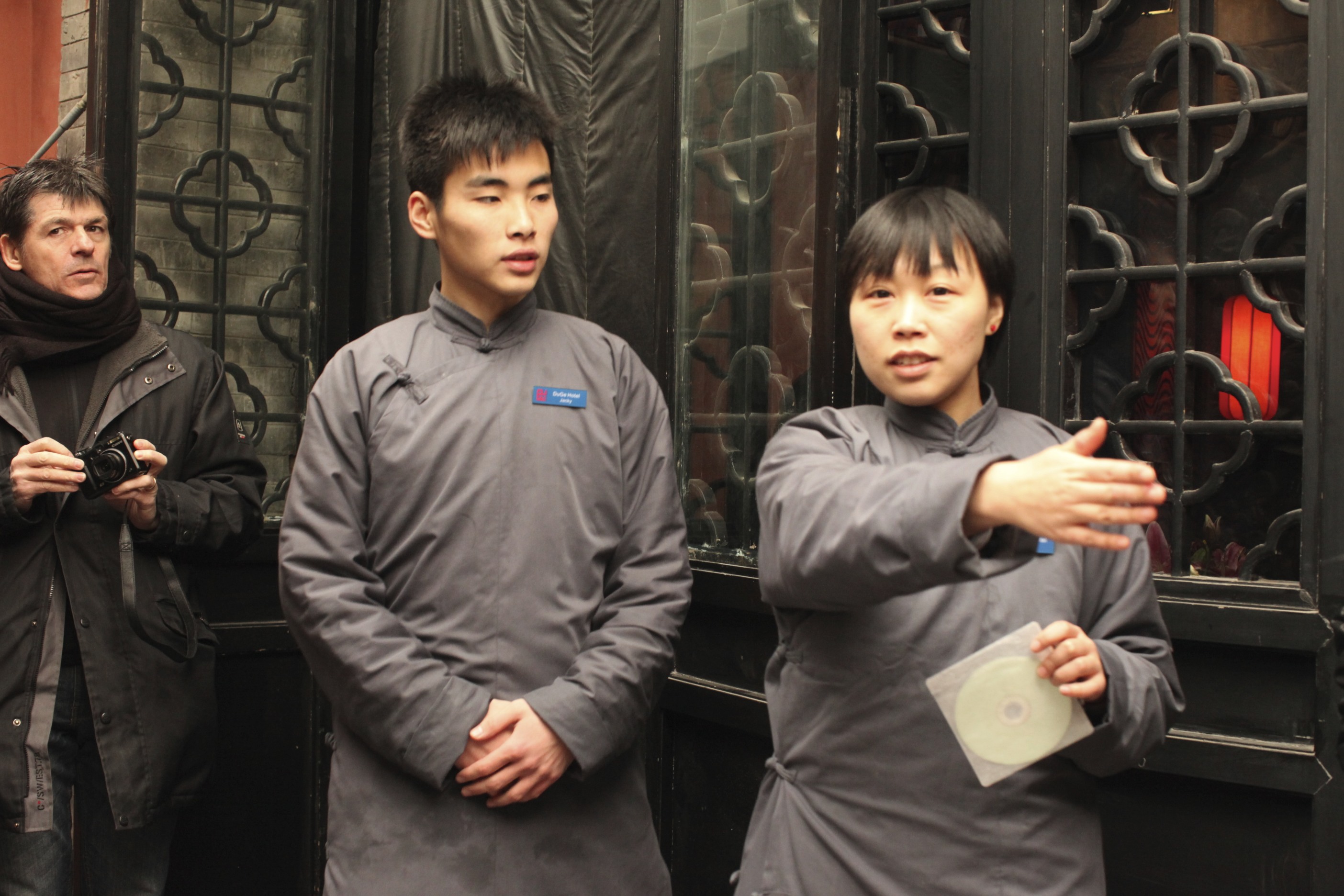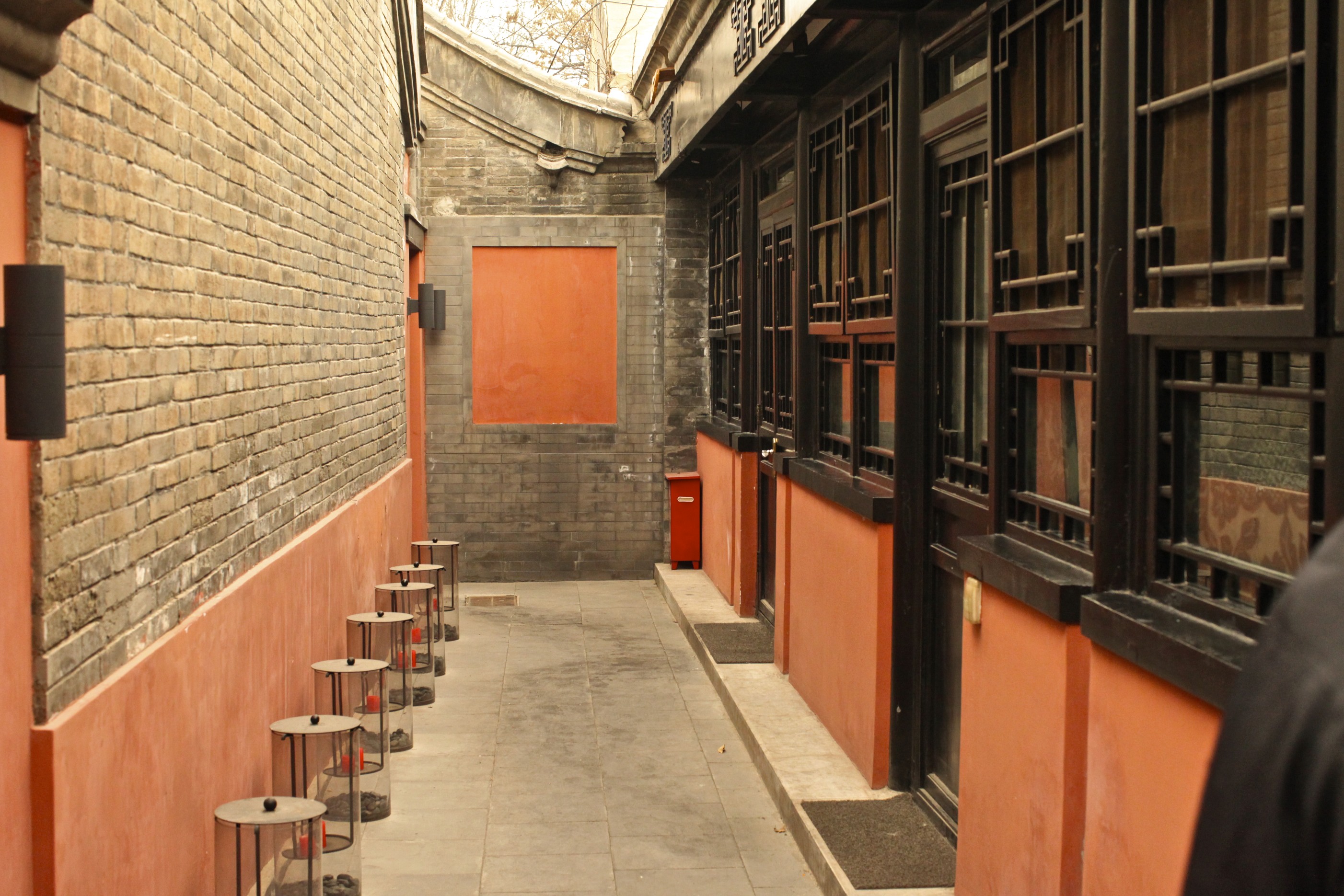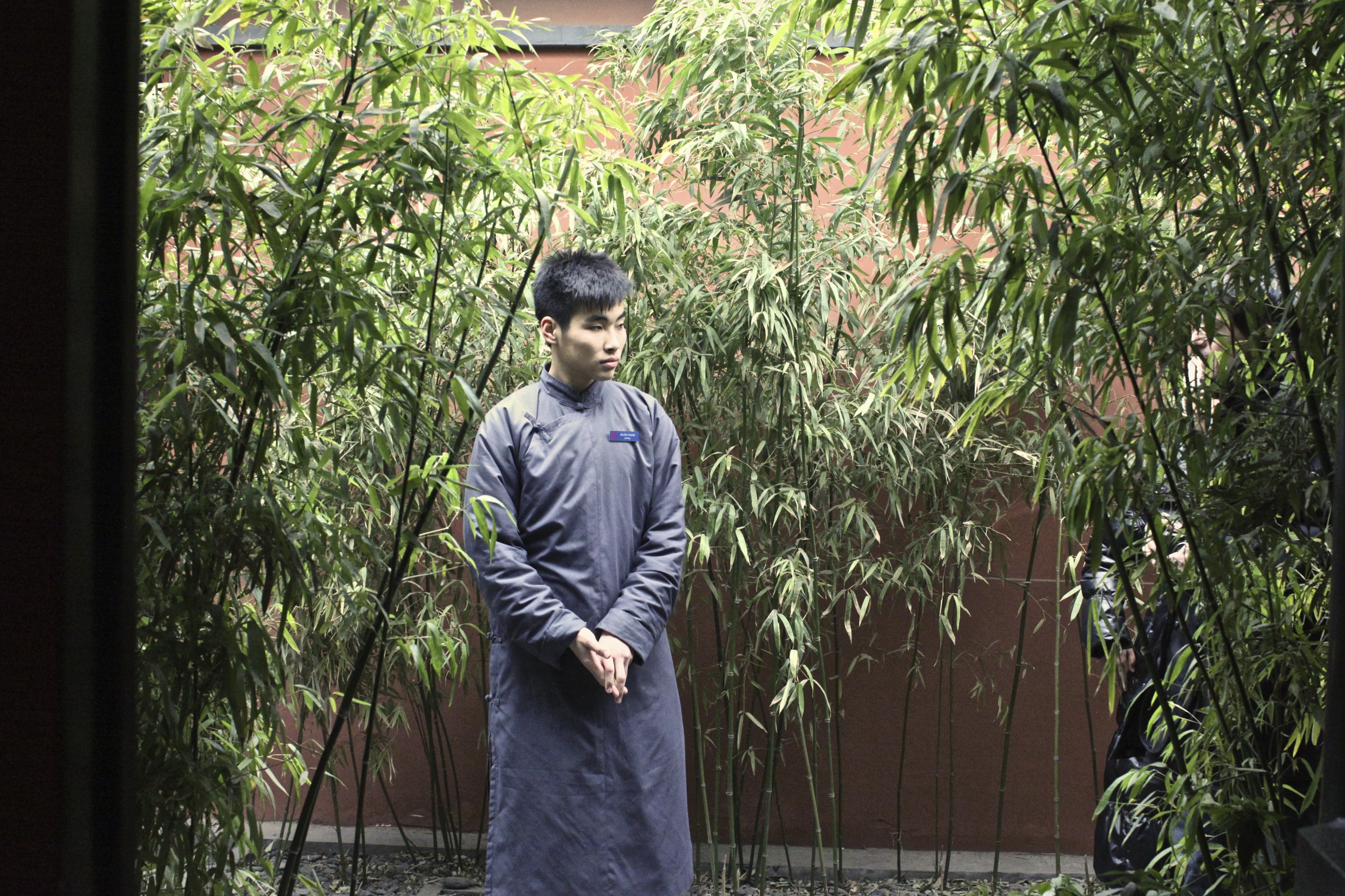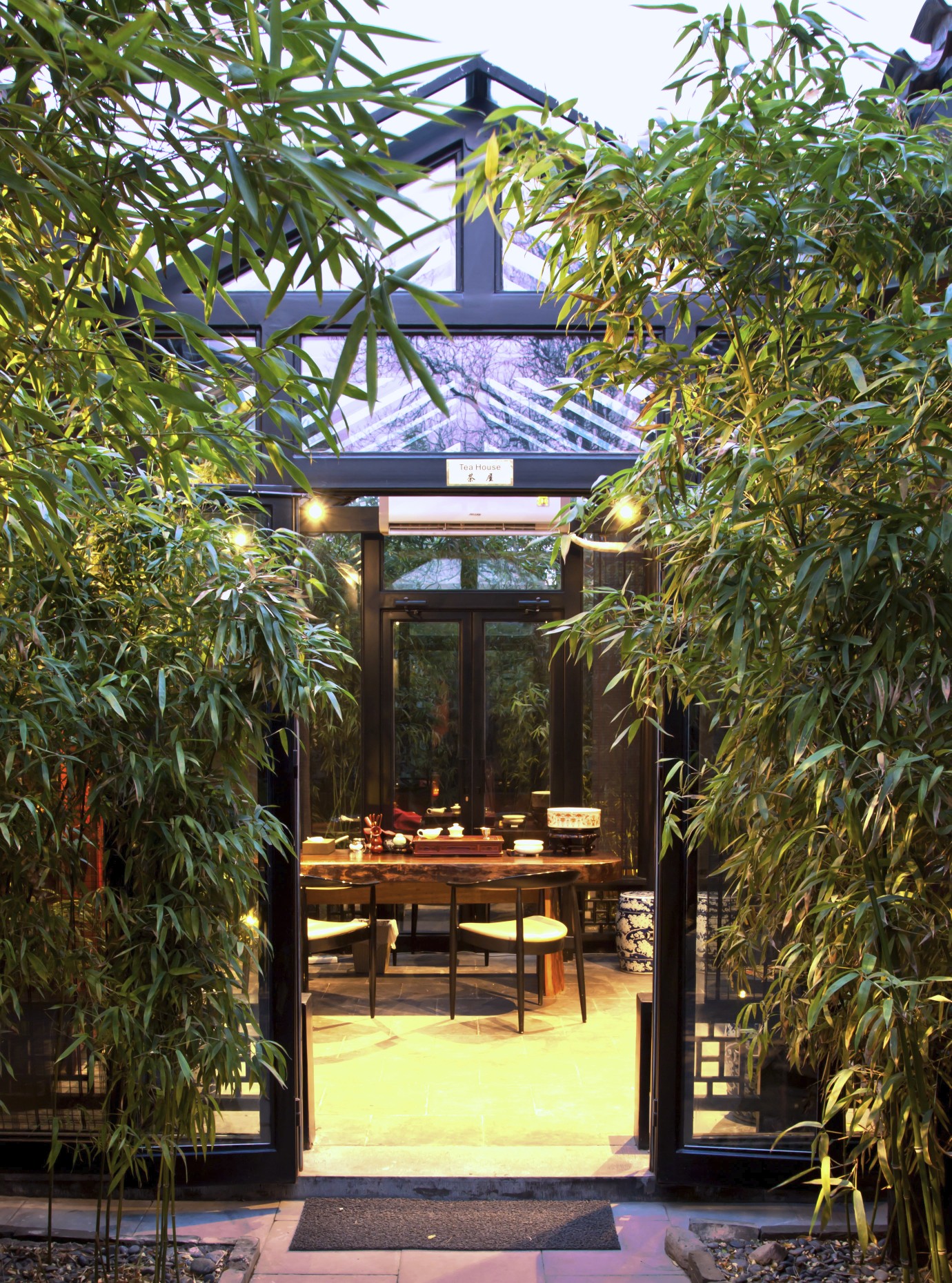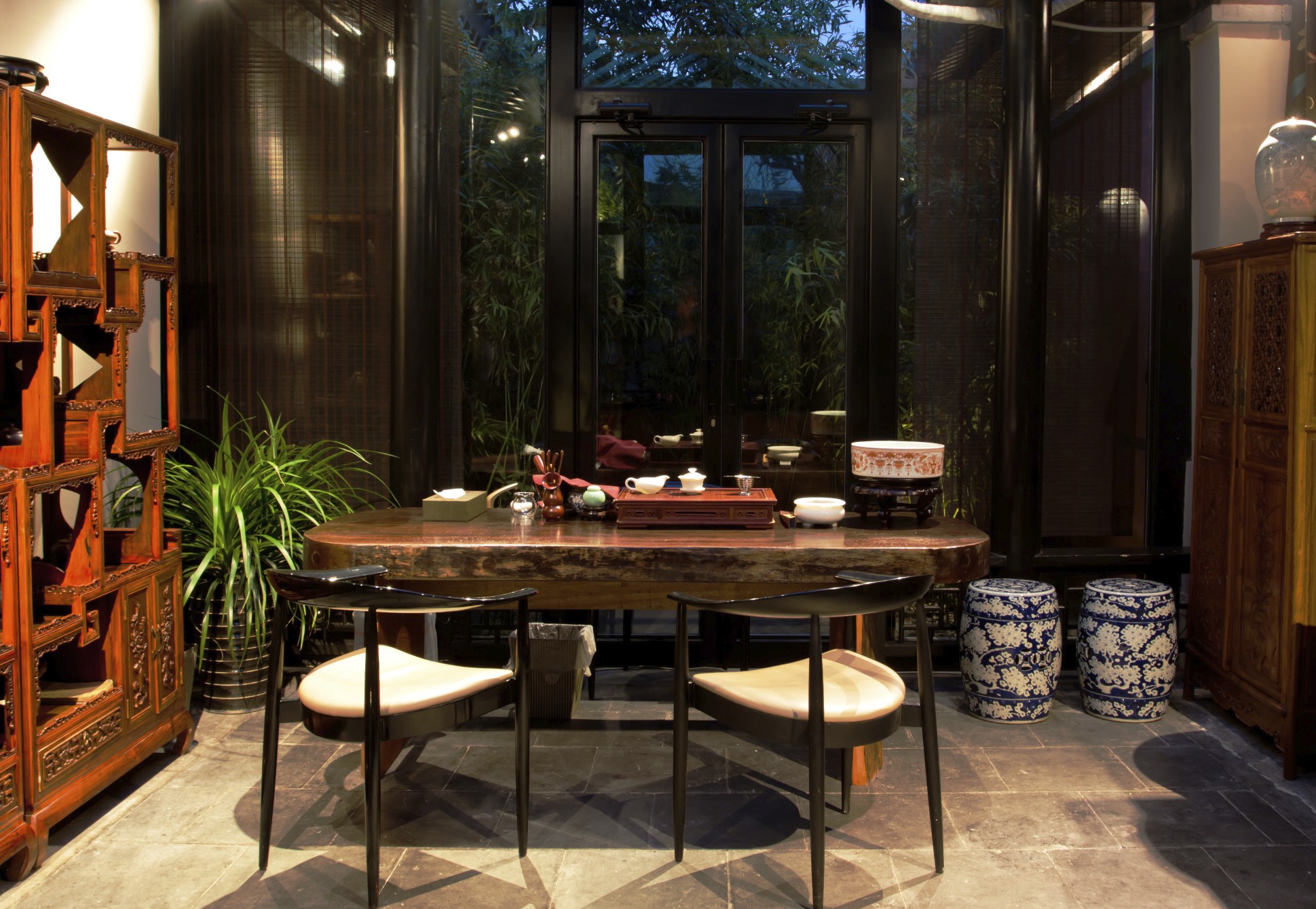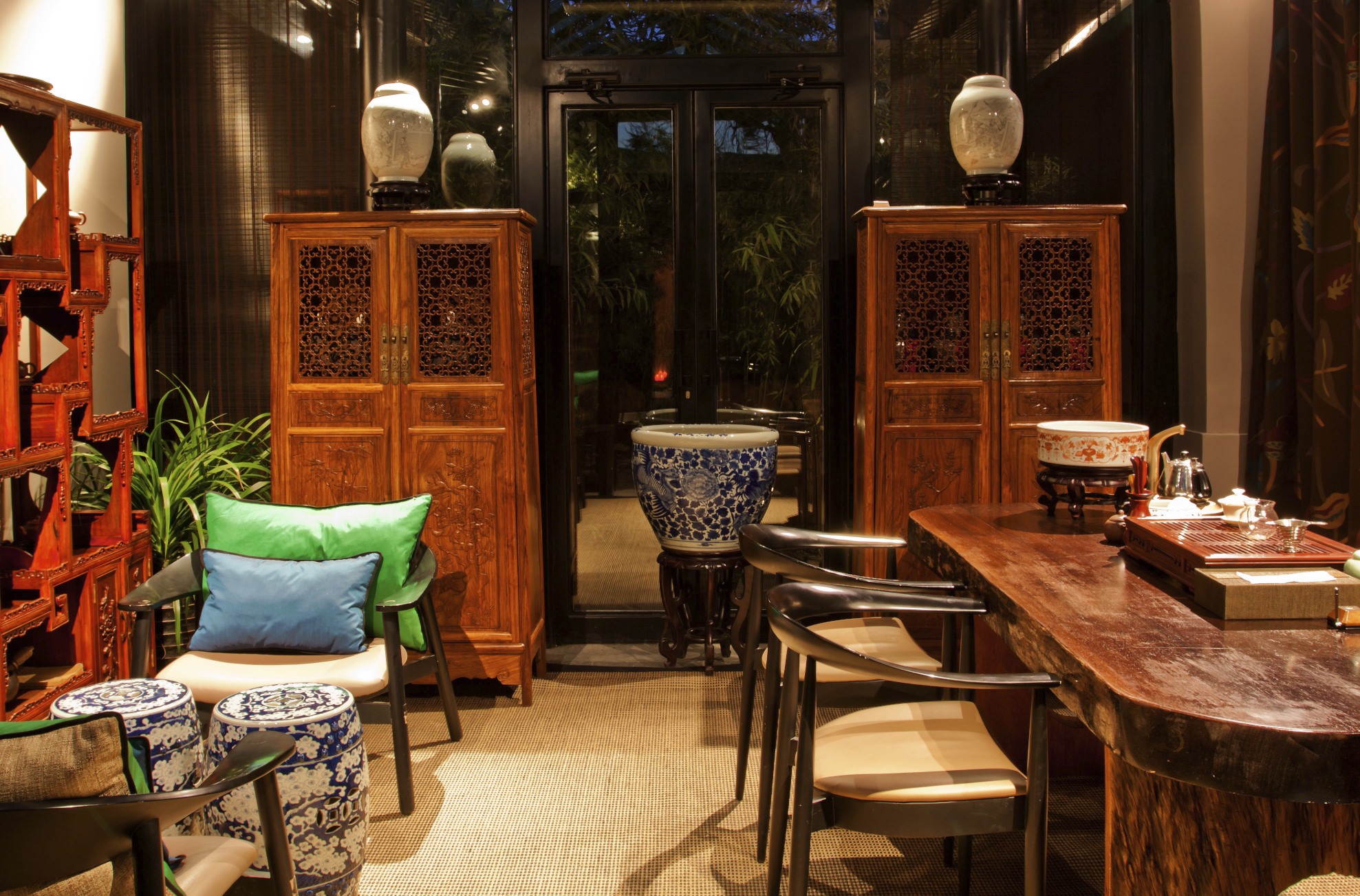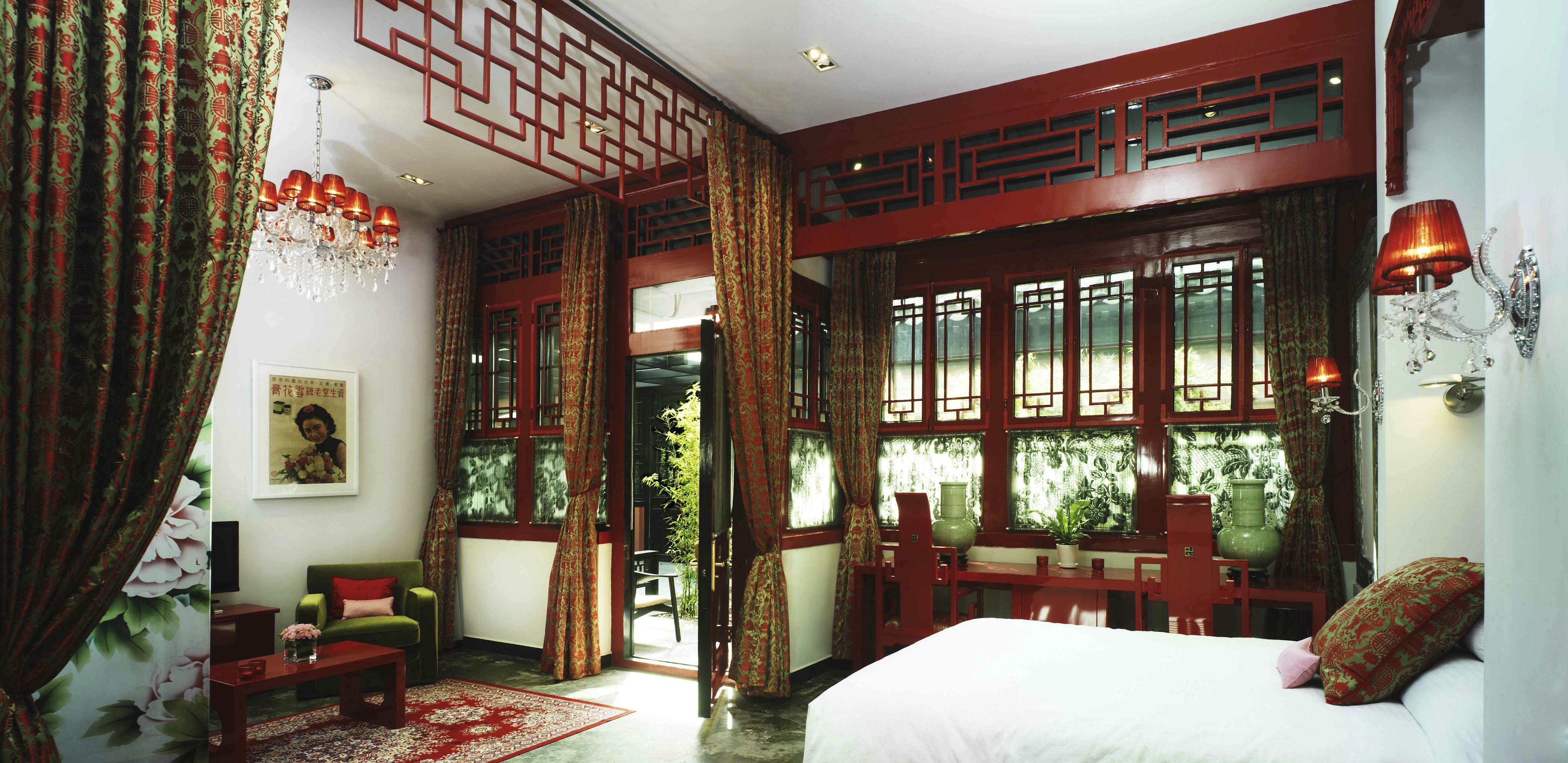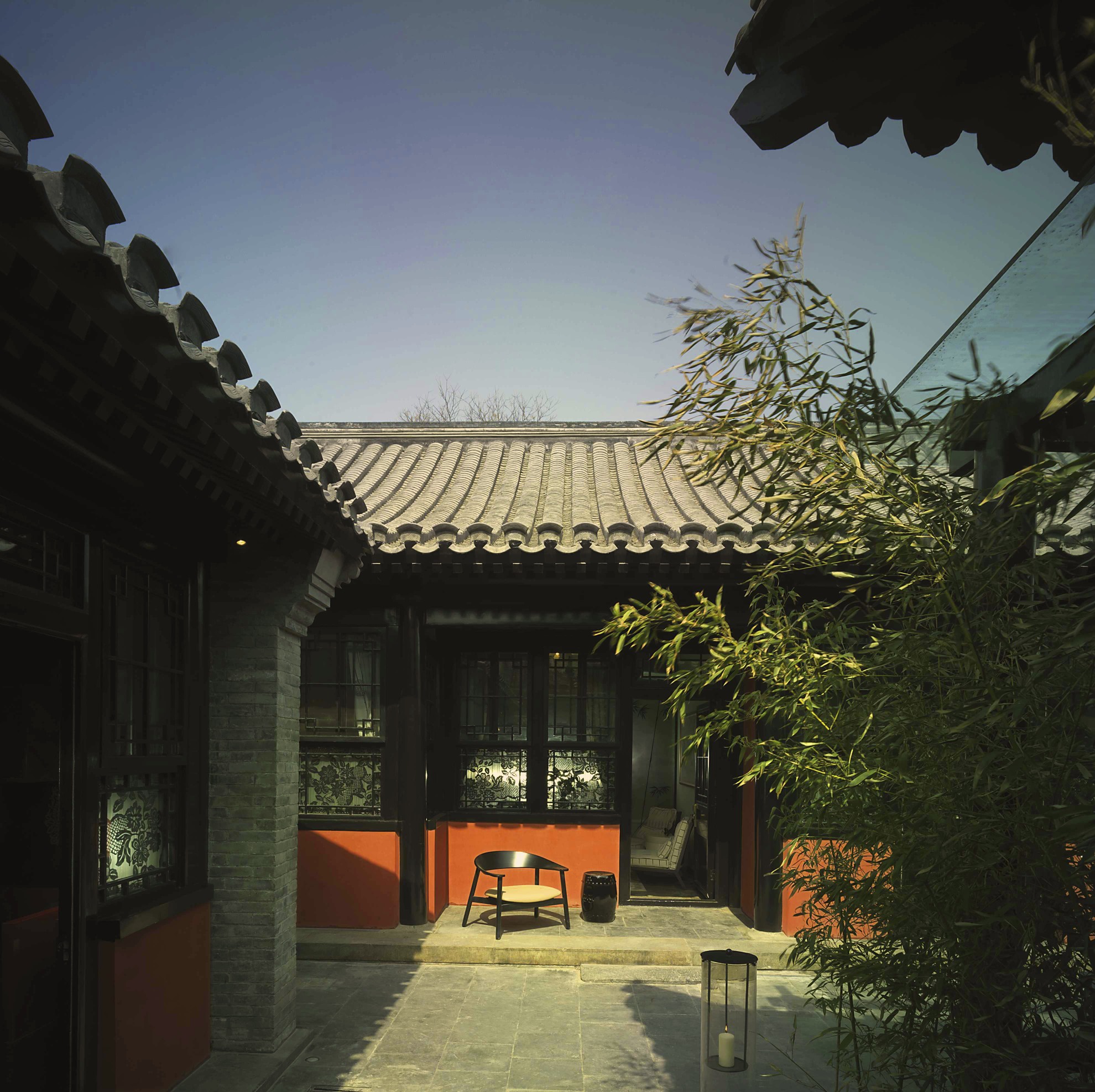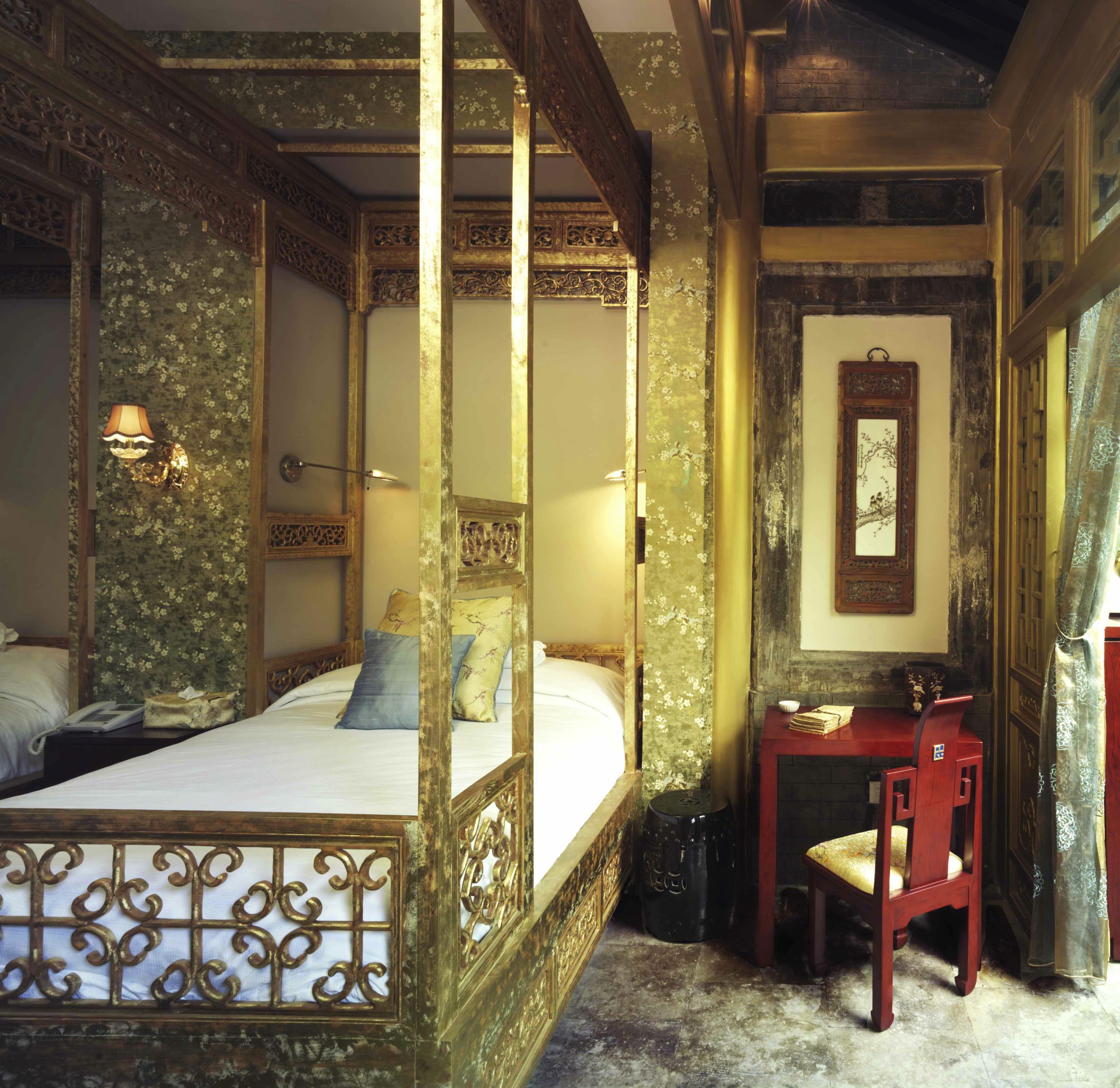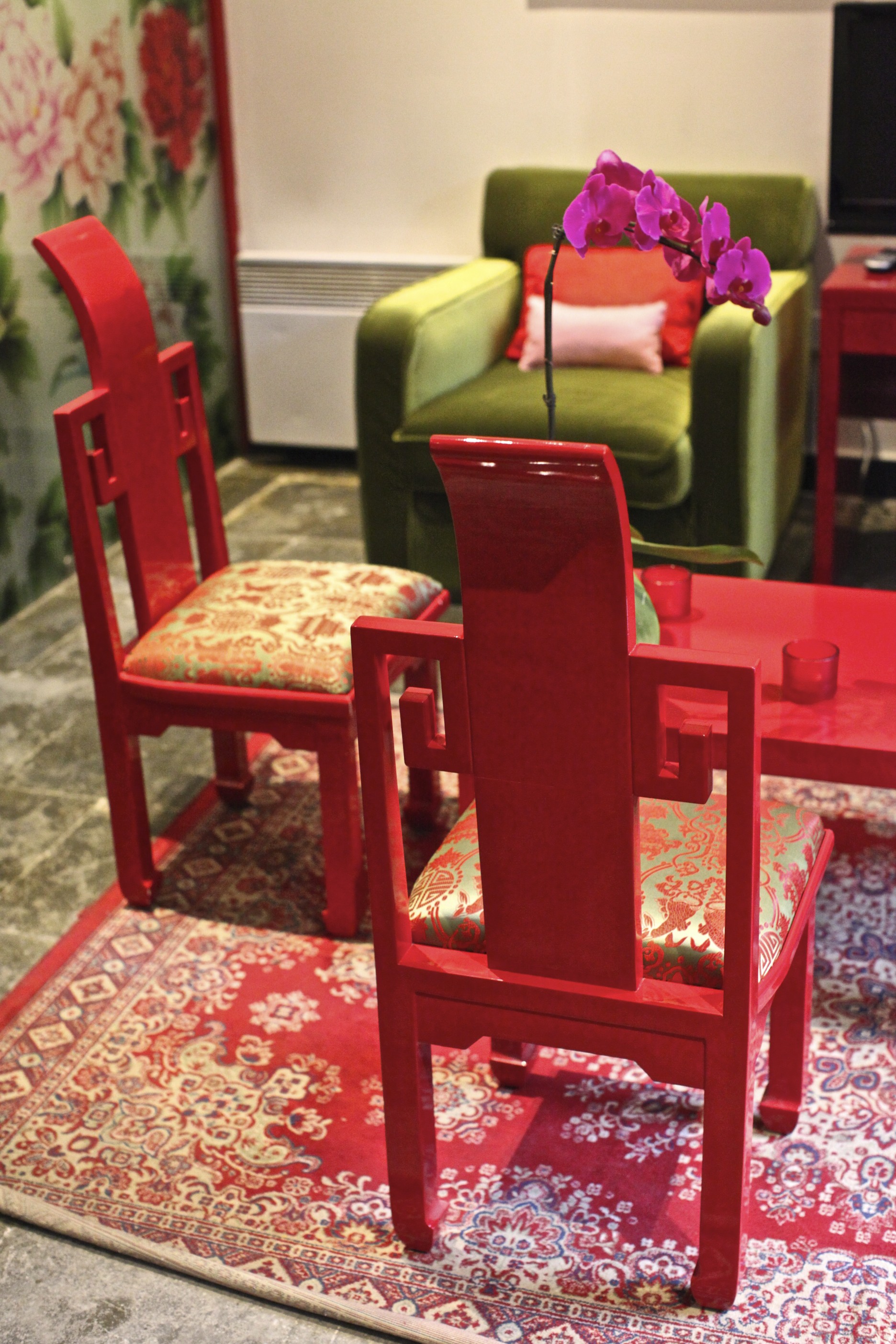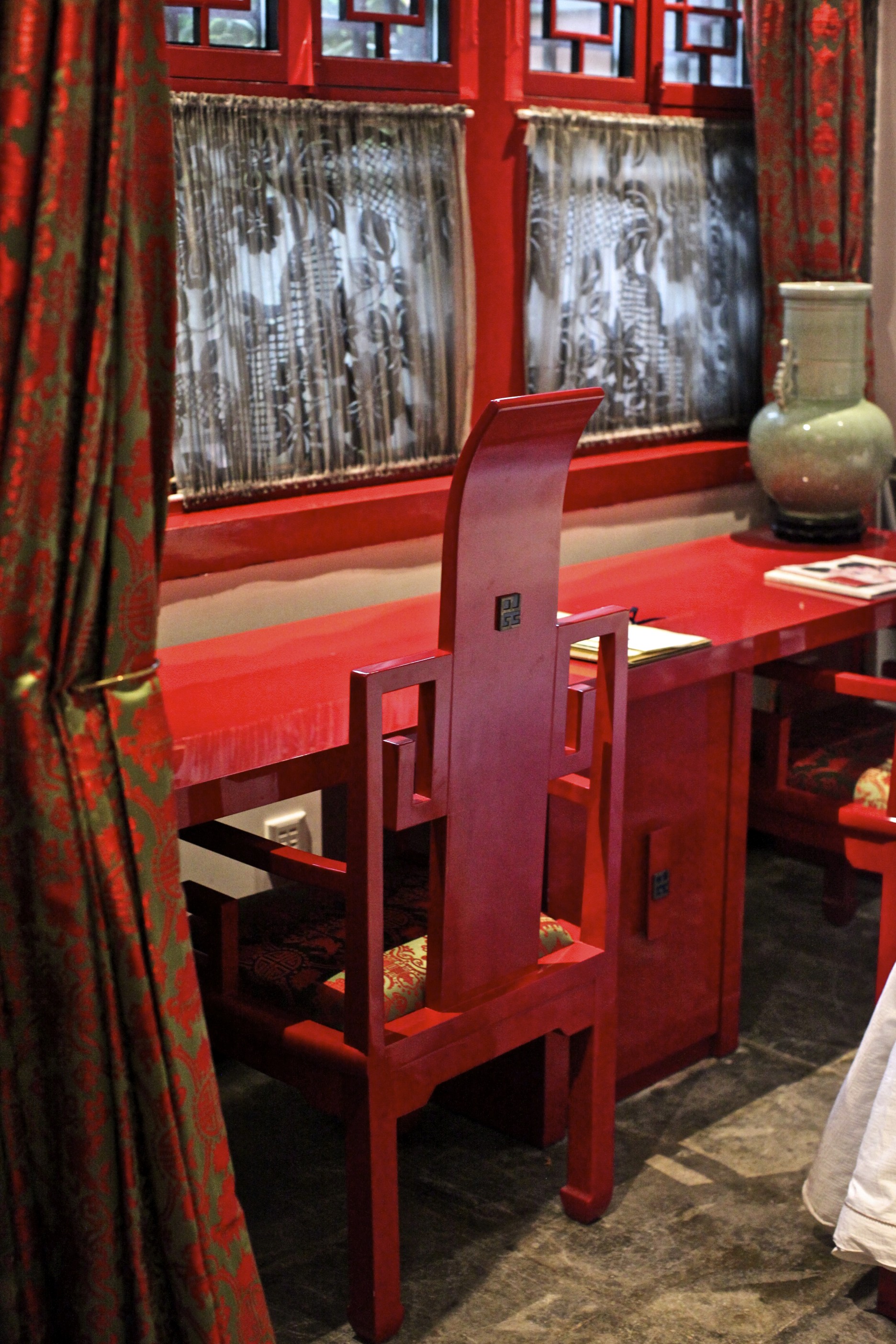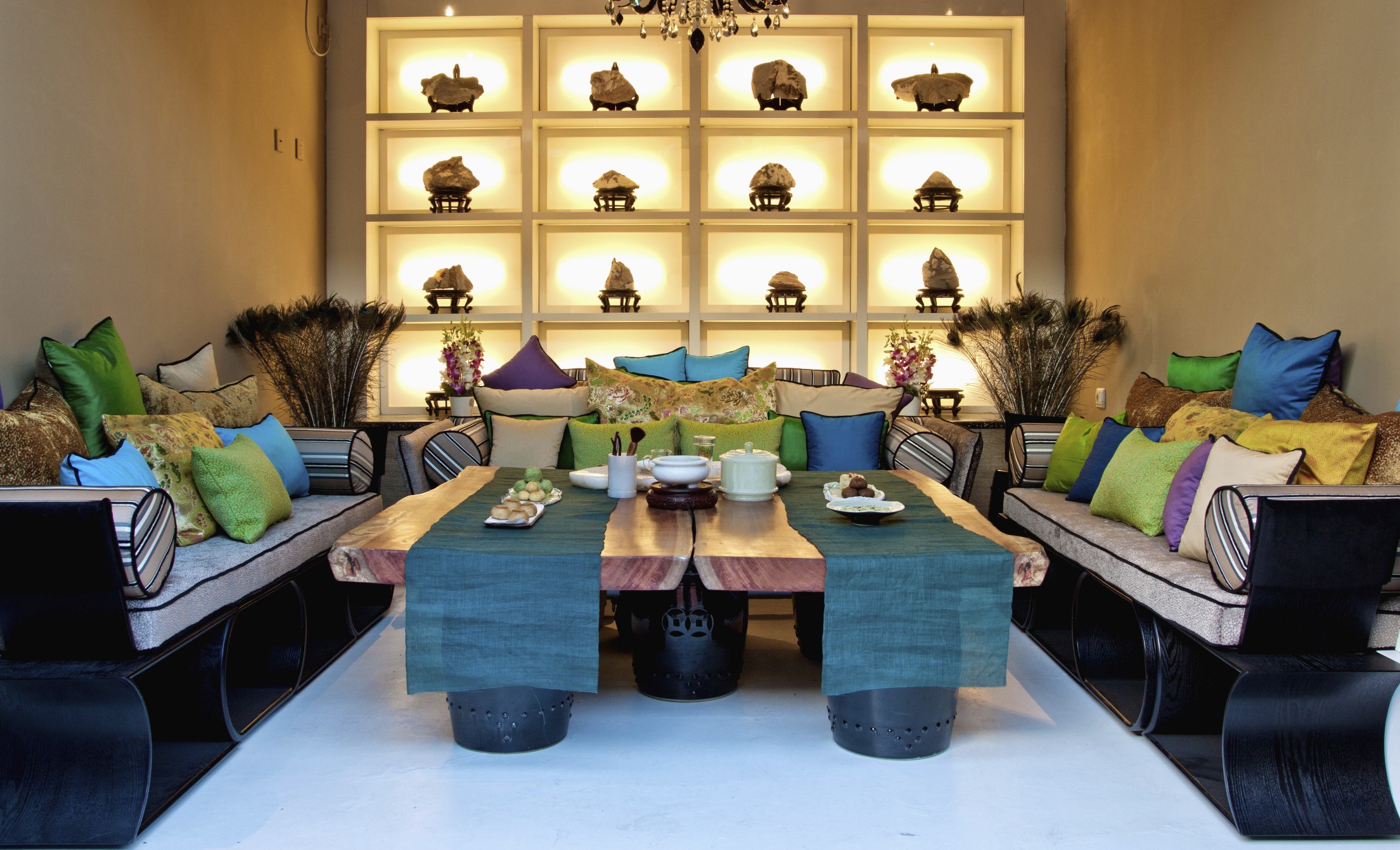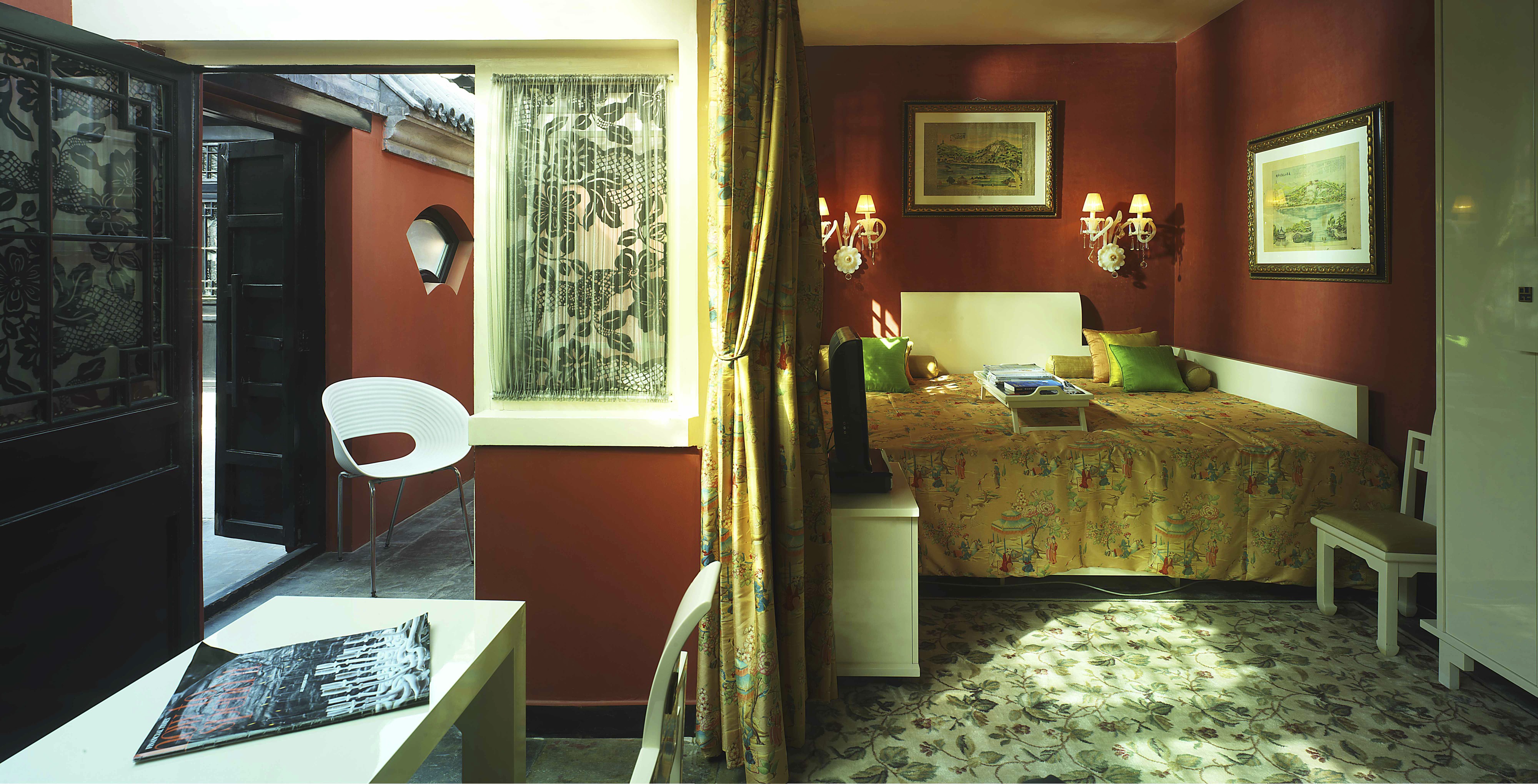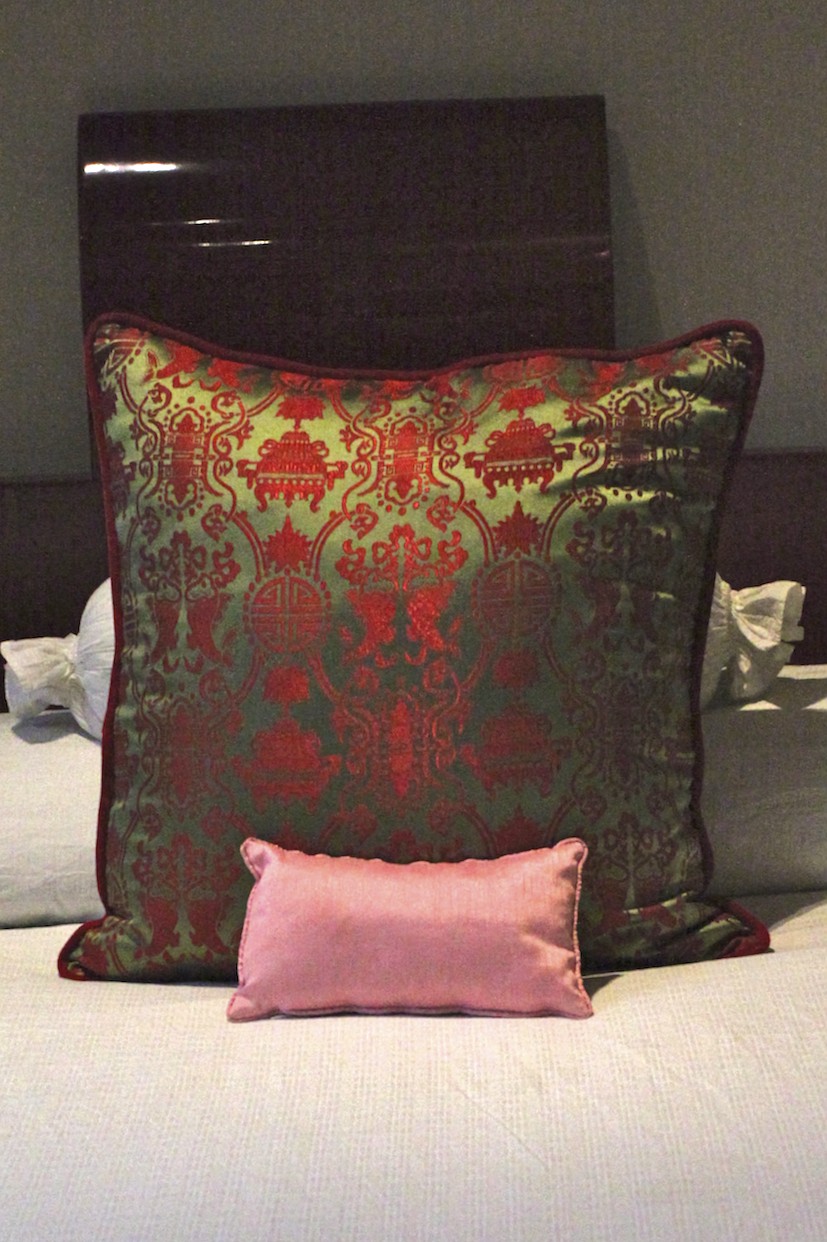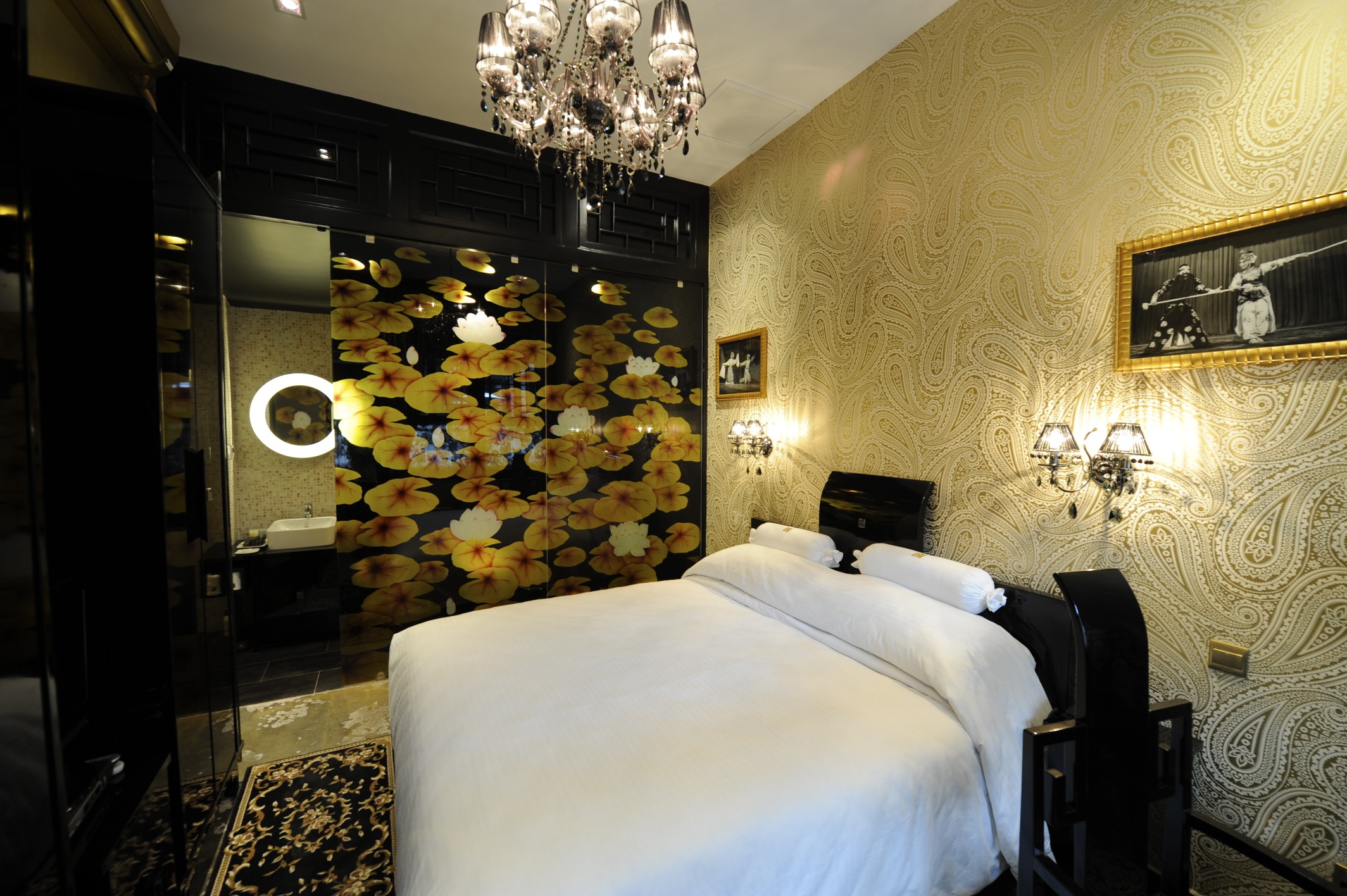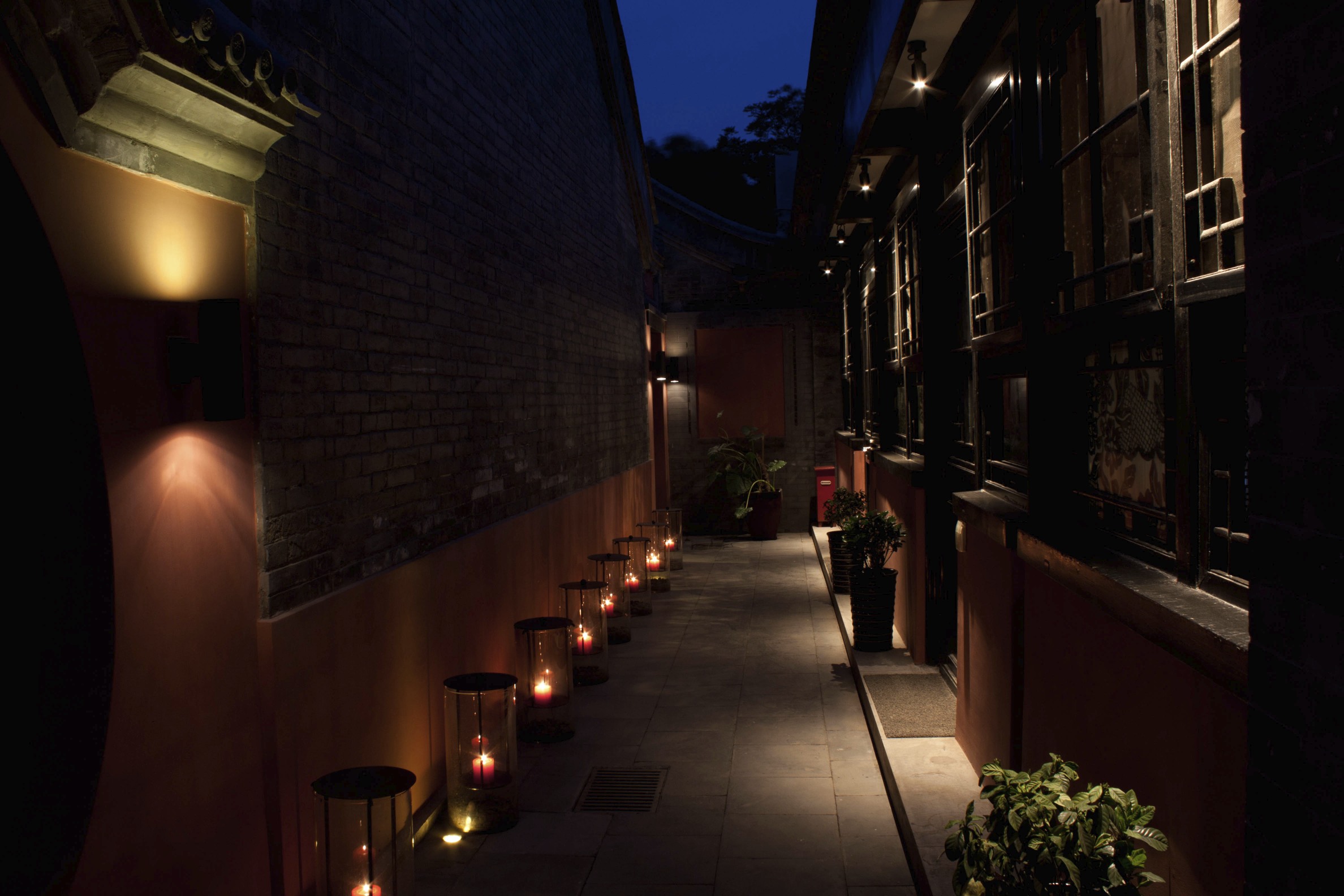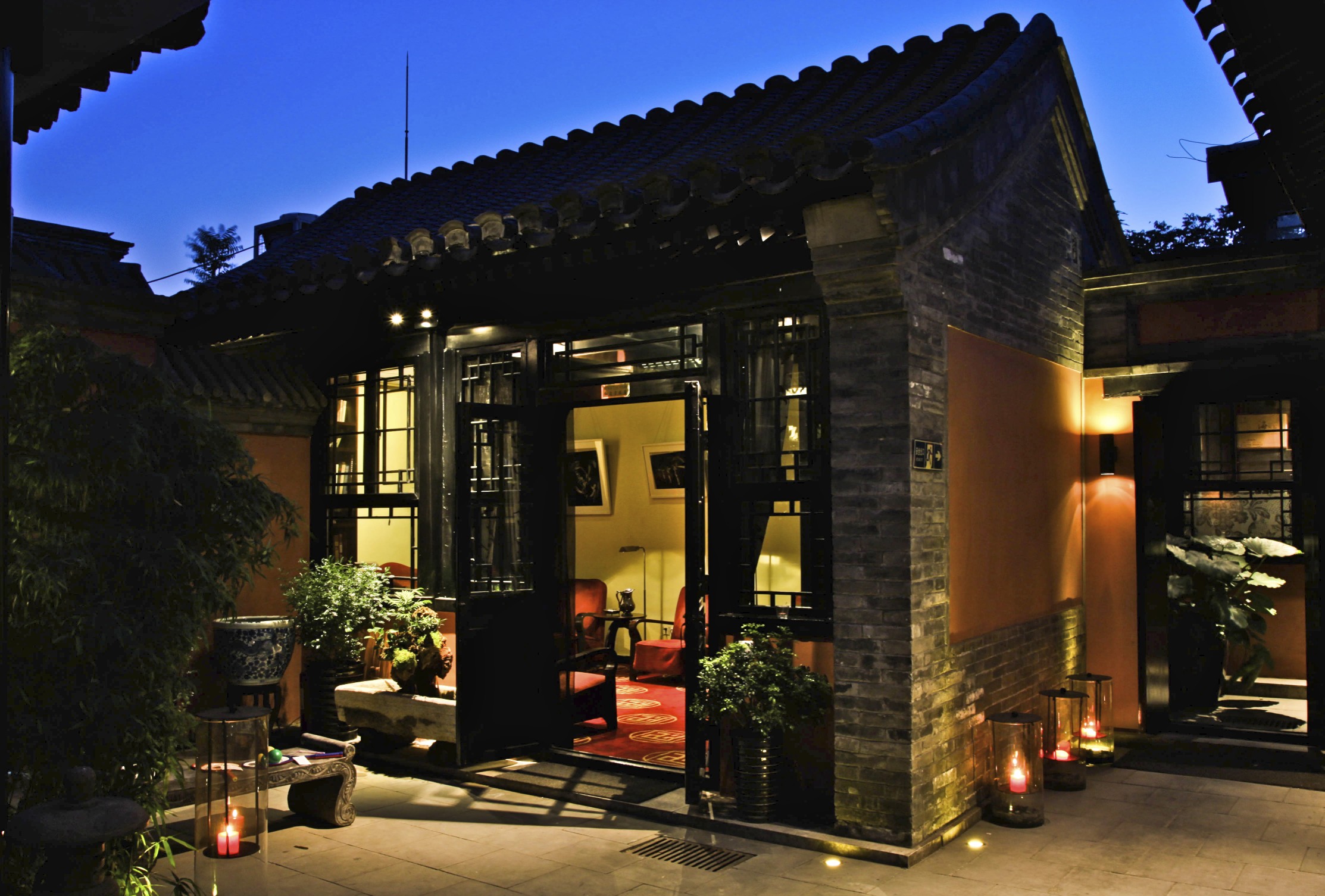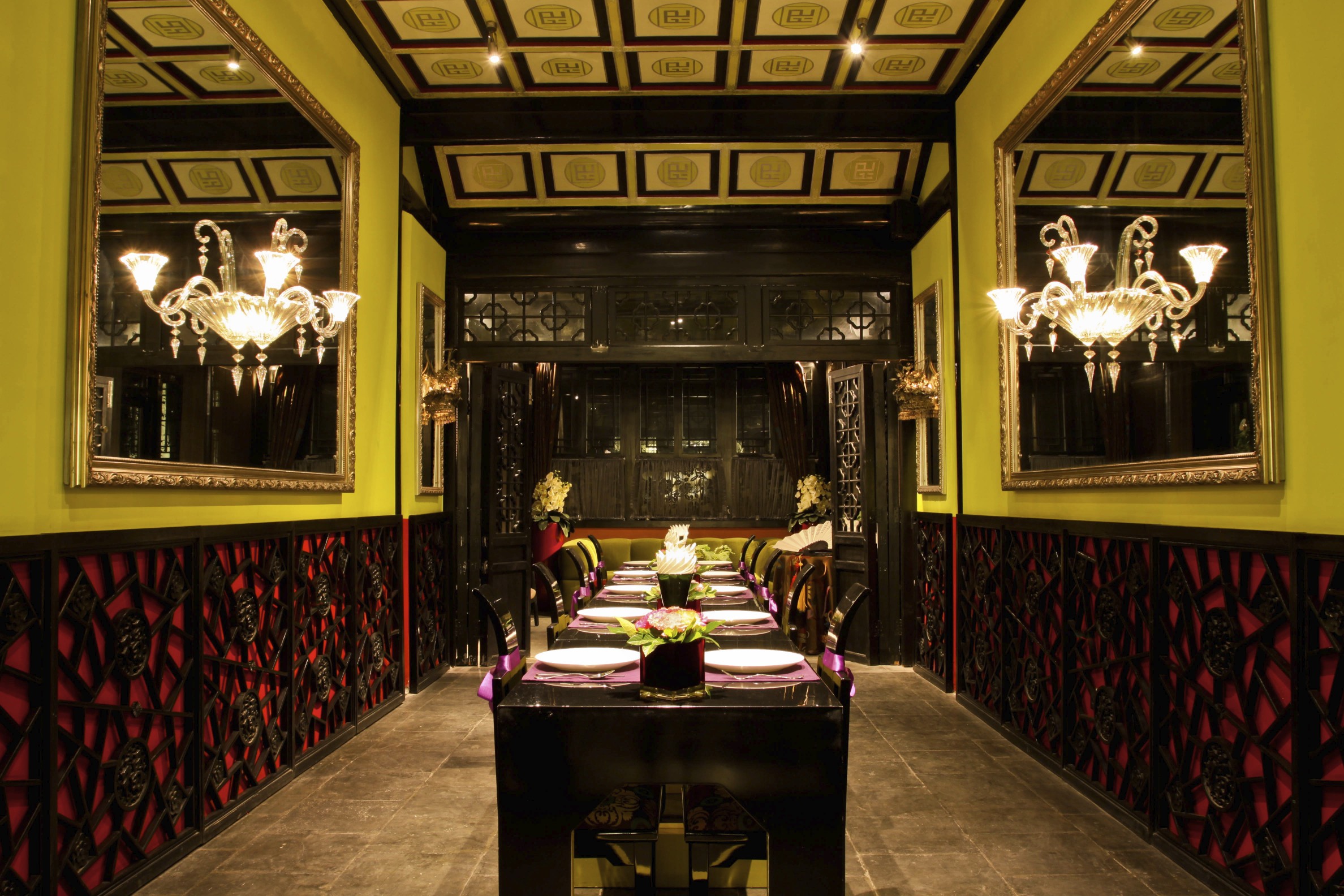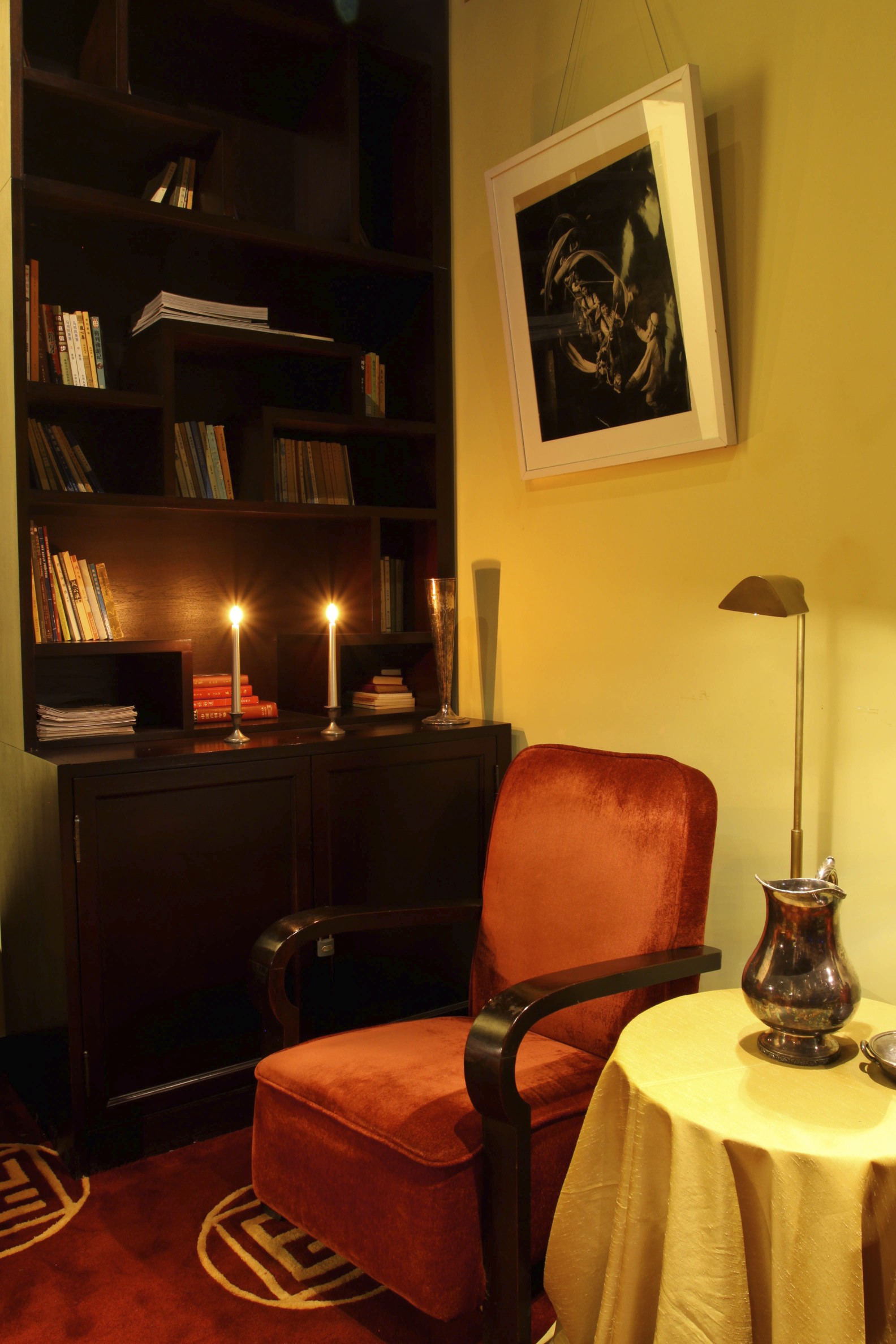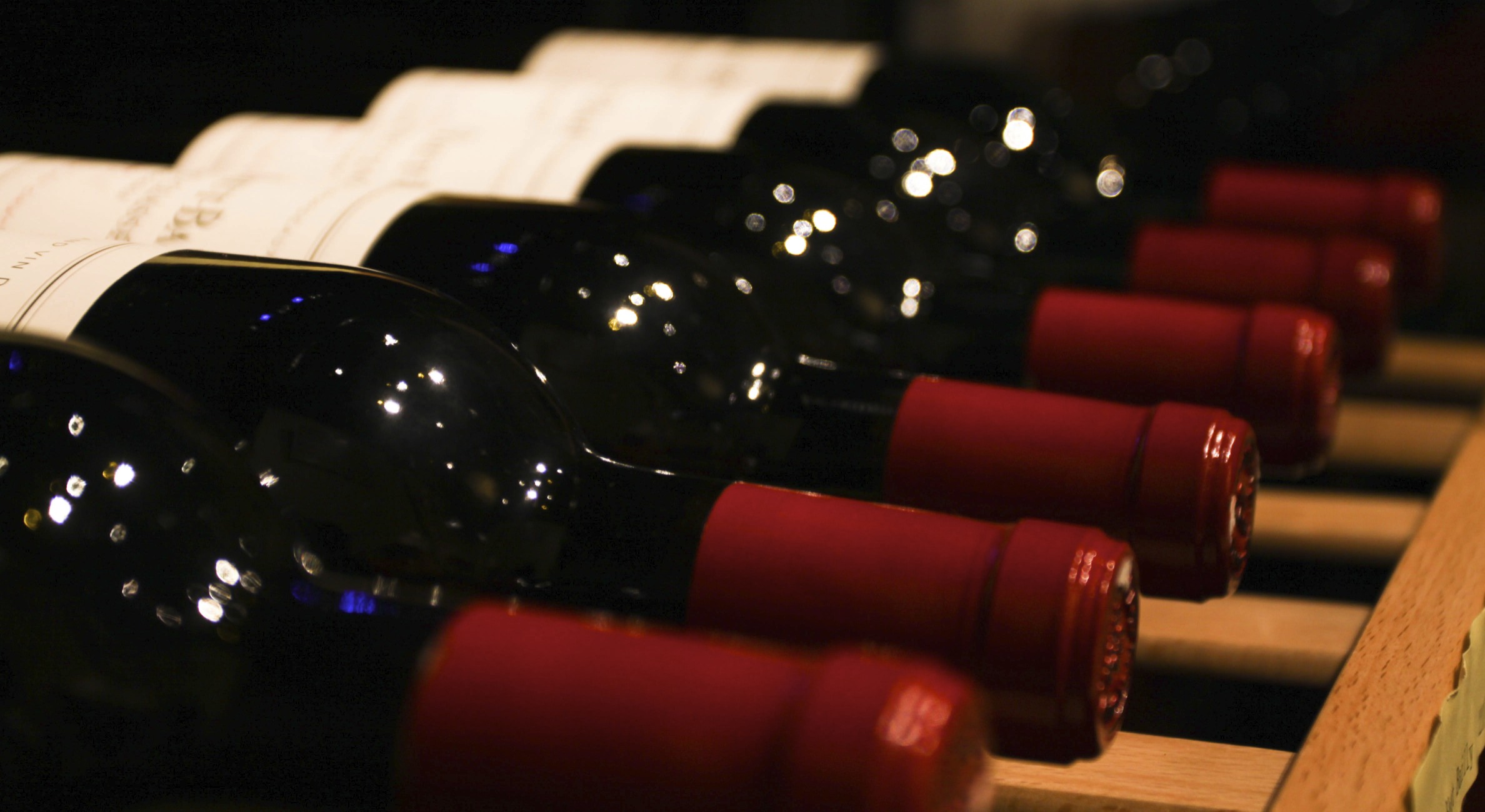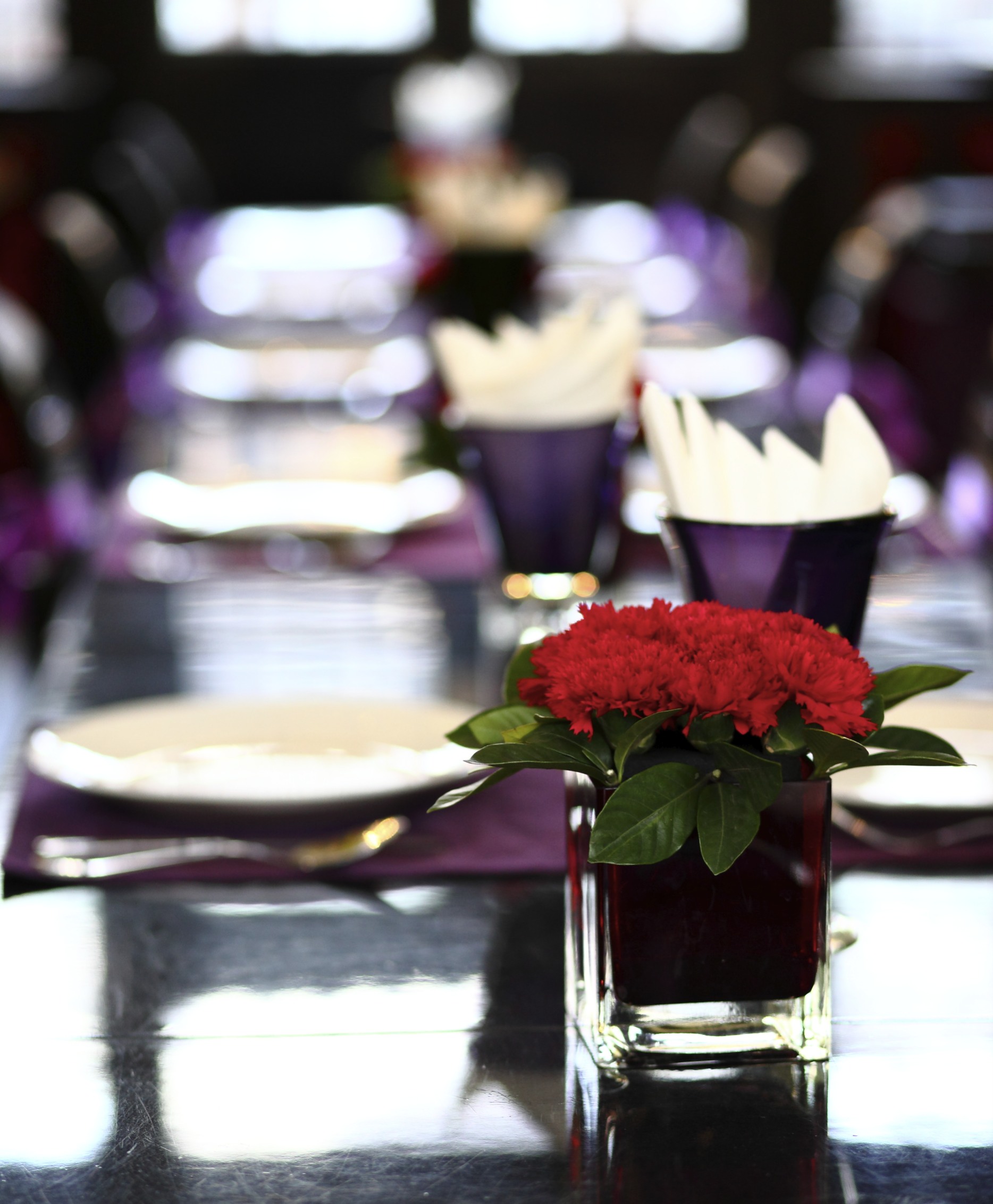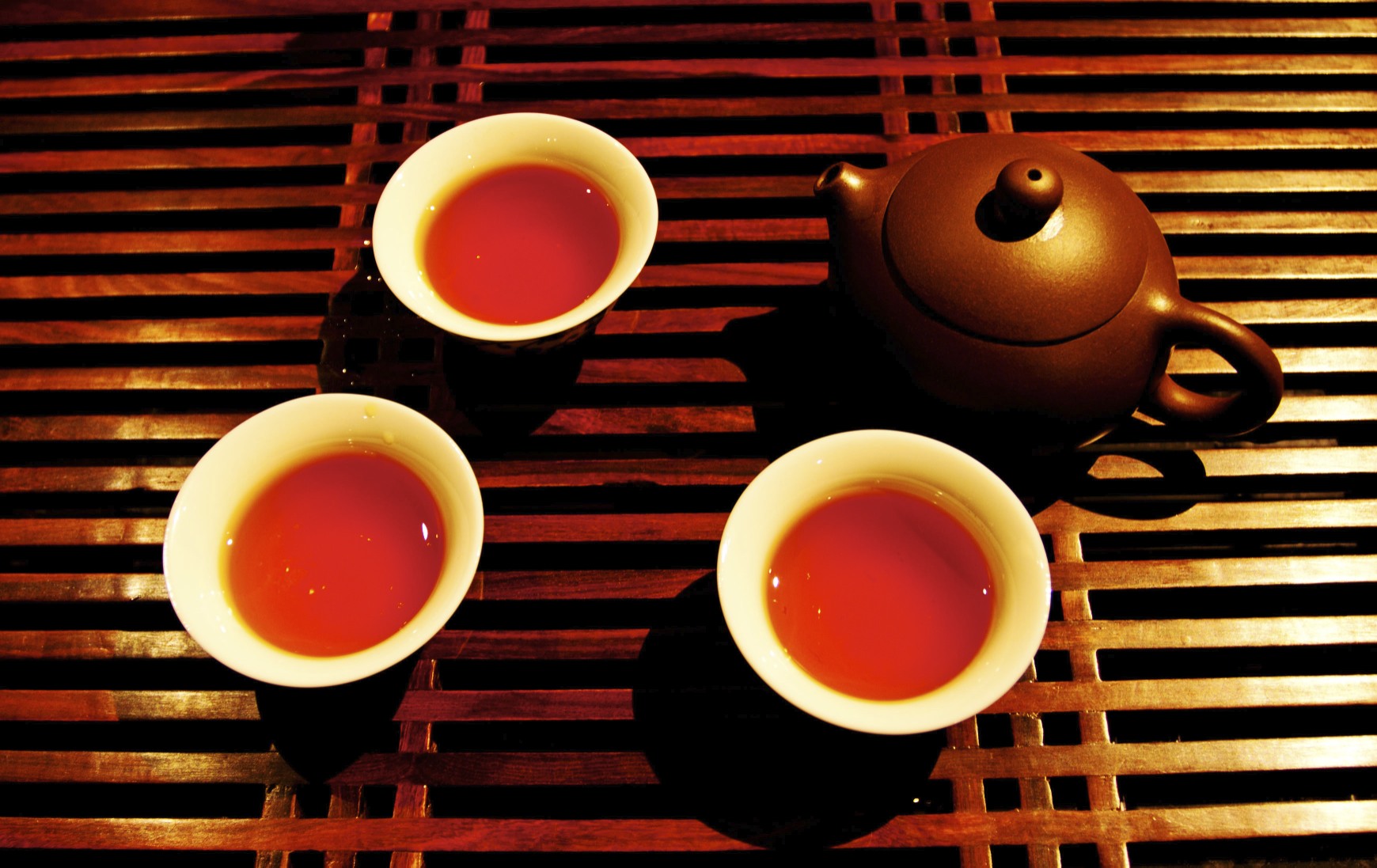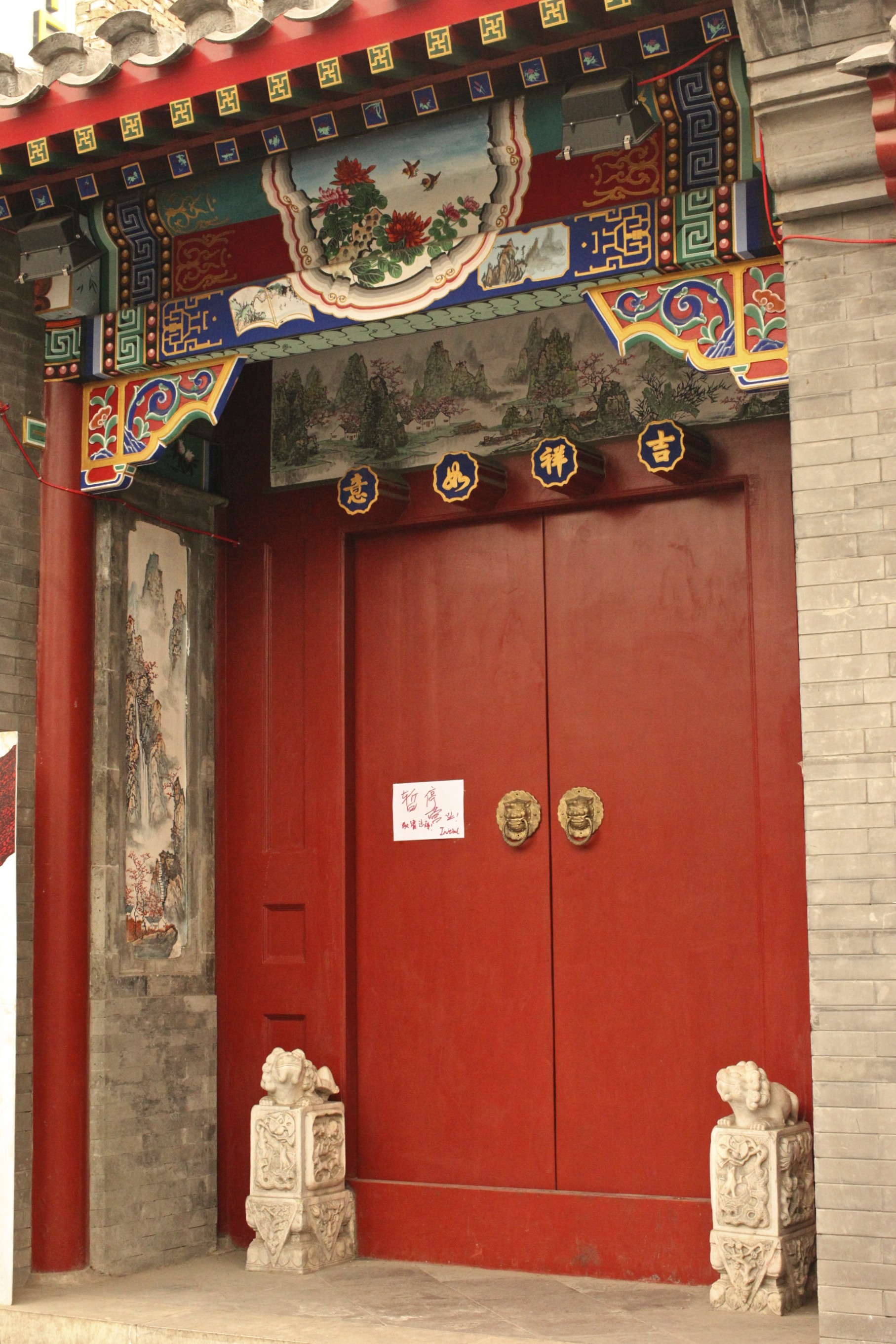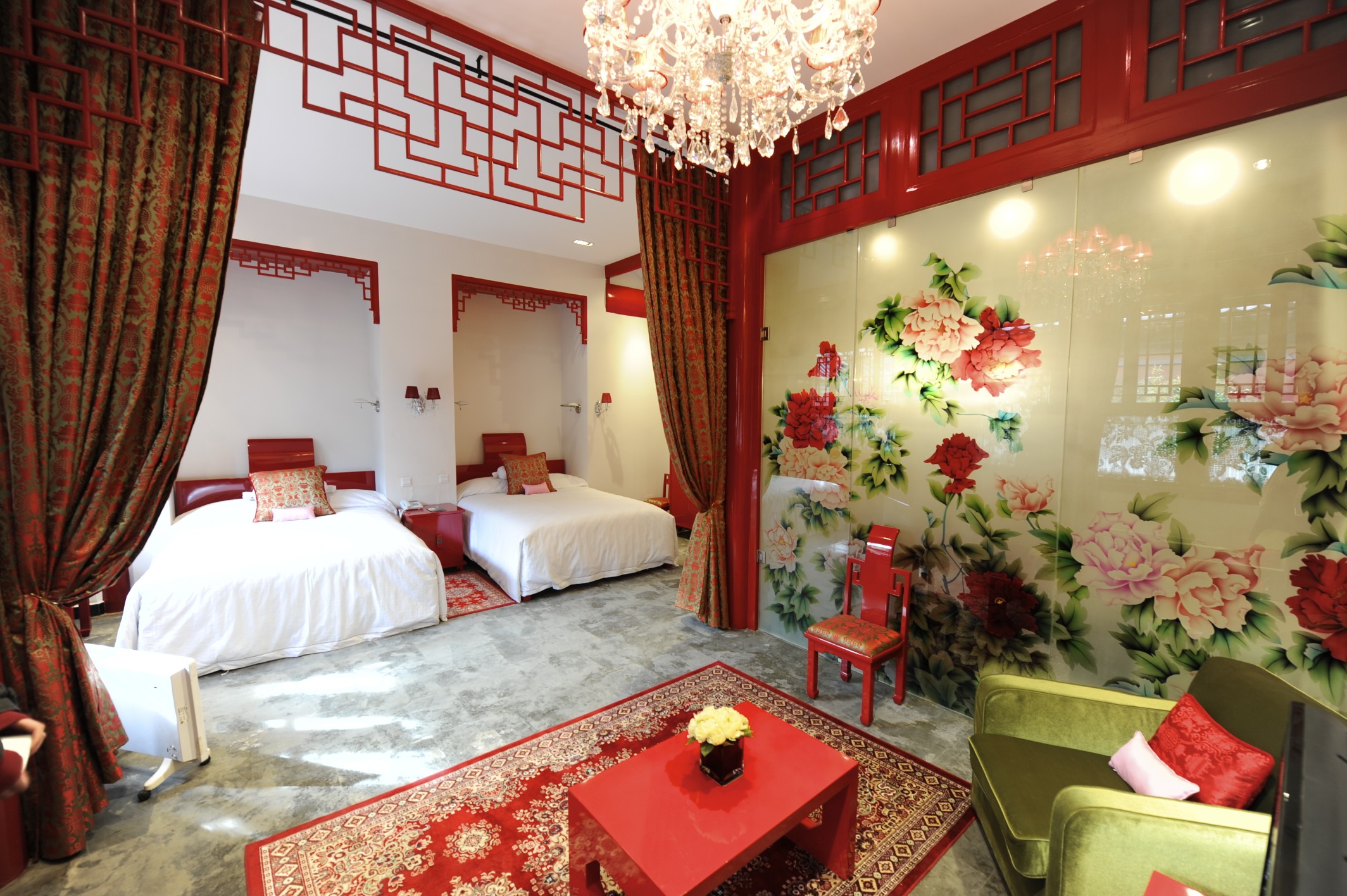” Then on the terrace before a cup of wine, on every side,the lotus flower will open...”
After nights sleep on a Beijing high rise , one feels the need to ground back on earth for at least a few hours. Our unforgettable experience in hutongs where we visited to the artists studio of Harrison Liu and Jehanne de Biollet, with our bikes, we decide to explore further explore the hidden life in the heart of these ancient neighborhoods.
In the hush of the hutong, concealed in a tiny lane we find DuGe, an enchanting courtyard boutique hotel, not much more than a stone’s throw away from Lake Houhai with its lively bars, restaurant and nightlife.
Once the residence of a noble Beijing family, this 200-year old property has been lovingly redesigned by Jehanne and Liu and brought to life in order to satisfy a thirst for the real Beijing experience. From the entrance door blue, red and the hammered bronze door handle we enter into the small Hotel based on the experience of at home in Beijing style.
Originally built as the Suojia Garden, the courtyard residence that is now Duge courtyard boutique hotel was extensive and was first owned by Mingshan, Minister of the Imperial Household in the late Qing dynasty, from the 10th year of the reign of the Emperor Xianfeng (1860). Mingshan’s son and grandson went on to be ministers under the Tong, Guang and Xuan reigns of the Qing dynasty. It was the only family to produce 3 generations of Ministers in the history of the Qing.
A master in traditional door making worked for weeks on DUGE’s entrance door, layering horse hair and gluing it to the heavy made to measure door frame. All doors and windows frame were also made to measure on site by a specialist window-maker. Ceilings were painted to Jehanne’s design and sequences by painters trained to work in the traditional manner.
We are kindly received by the guests relation Adam Xie who was apparently waiting for us .( In China everyone knows what ‘s necessary very quickly) On the entrance Drawing Room, reminiscent of an old leather sofa, the highly comfortable “little mountain” sofa by Pagnon-Pelhetre has already become my best friend.
An experienced hotel staff is offering us a cup of tea and a glass of house wine Local fashion and design magazines are displayed in front of the gigantic Harrison Liu’s black and red lacquered cupboard with gilded bronze fixtures. On the ceiling, a bunch of red lanterns greet me welcome and on top of the cupboard a stunning blue and white Ming Dynasty storage jars and covers with dragon motif.
We are now invited on a small tour, where the environment of a hand-painted doors and a small courtyard surrounded by old bamboos offering privacy, intimacy and tranquility, away from the hustle and bustle of a great city , I slowly start to understand DuGe’s concept of true Beijing hospitality.
With the help of an impeccable staff, I leave my coat in one his hands and with my camera I shooting everywhere I can to make sure I do not miss one single detail of this enchanting invitation , where suites and room style decoration seem to come directly from ancient fairy tales. I will describe for you in detail each and every room and post respective pictures that I hope you’ll appreciate and enjoy the ride.
Due to the intimate size of the hotel, the designers’s Liu + de Biolley’s concept was to emphasize the jewel like decoration of each room giving great attention to details and color effects where Jehanne drew on her personal archives as an Oriental art specialist, collector and art advisor to create a unique theme for each room, suite and dining room.
The selection of curtains for every room was done very carefully to emphasize the general theme of the room. DuGe favorite was the paper cut like sheer gauze they selected in black for all the windows giving the yard a quiet feeling of soft elegance and mystery.
Liu + de Biolley’s style is not nostalgic or based on recreating the old. It is all about using their own sense of space and colour to create a sophisticated and luxurious life style concept and design in a courtyard in old Beijing. For each and every client, they re-invented themselves with new colour stories and sequences that integrated culture, art, fantasy and romance in a bold and elegant manner and so they have done yet again for DUGE in Qianyuanen Si.
THE SILK ROAD
For this room, Liu + de Biolley created a mini yard within the yard concept. In order to emphasize the space offered in this suite, the imperial brick red has also been chosen to paint the inside walls of the suite. This gives the guest a great space. The theme for this room is the story of the Silk Road with a Chinese princess traveling to the West to marry a foreign prince as depicted on the glass panel wall that separates the bathroom from the bedroom. The antique coloured etchings of the summer palace as well as a lithograph of a communal wedding celebration decorate the walls. A Natuzzi armchair in black and brown cut velvet with butterfly motifs offers extreme comfort. For this room Harrison Liu has created an unusually large Chinese style bed in ivory lacquer and imposing desk and cupboard.
THE PEONY PAVILION
The peony is such a romantic flower, and being one of the obvious symbols of China, Jehanne de Biolley couldn’t resist creating a theme room around it. Sensuous red for all the lacquered furniture designed by Harrison Liu is the main feature of the room beside the hand painted glass wall panel of pink and red over sized peony.
For this room, a pair of original Ming Guo Shisheido advertisement posters decorates the wall. A subtle Shanghai art deco feeling emanate from those and from the rather angular armchairs in leaf green velvet below the chandelier in the seating area. A soft touch of pink in the tiny silk satin pillows echoes the feminine touch around the room. A craquelled celadon glaze archaic vases decorate the spectacular red lacquered writing table by the windows. Red in China is the symbol for happiness and is used to decorate all happy events such as wedding, birth, birthday etc…
THE IMPERIAL SUITE
Reminiscent of gone by days when wealthy owners of the West would create a “Chinese room” in their Manor Palace. Jehanne de Biolley selected romantic tarnished gilded wallpaper with birds and cherry blossom. The faded blues and off whites, the powder tones and other “antic shades” inspired Jehanne to recreate the splendor of what could be an imperial suite in a Beijing palace. Liu Linian’s furniture in Mahogany veneer is classical yet is keeping with the contemporary shapes he has created for DuGe.
The four poster beds in carved out wood were painted by hand by Jehanne who made use of her skills as a restorer of old European paintings. The beds exaggerated height is to fit the original alcoves found when the historical building was being renovated. A cream leather reclining bed invites one to day dream by the window. For the decoration, Jehanne de Biolley has selected reproduction famille rose export porcelain, and four paintings on porcelain in a carved wooden frame depicting the four seasons.
THE BAMBOO
The center of attention in this suite is the original Qing dynasty carved wood panel with bamboo pattern that separate the main bed room from the sitting area. The bamboo being one of the attributes of the litterati, it was an obvious choice for Jehanne to create a room around the Chinese scholars’ accessories. Large brush pot with calligraphy brushes along with a spectacular work by Dawo Miaomo (ink on paper) and Ban Han constitute the main decoration in the room.
The oversized ivory lacquered furniture by Harrison Liu adds a feeling of contemporary in this otherwise sophisticated room and are elegantly emphasized by the delicate celadon walls. The bathroom, like a bamboo garden is lined in a spring green bamboo molded tiles and is accessible by walking through a glass panel depicting a bamboo forest painted in the calligraphy style of black and white, giving a feeling of moonlight which echoes the moon gate of the bamboo panel.
THE GOLD LOTUS
An exotic interpretation on the theme of the lotus. Liu + de Biolley have selected for this room a glass hand painted panel of white and gold lotus flowers and leaves on black.
The entire room is reminiscent of a jewellery box offering a splendid and rich oriental atmosphere with its black lacquered “opium bed” designed by Liu Linian for DUGE as is the rest of the furniture in the hotel. The artwork selected by Jehanne de Biolley for DuGe and which you can admire hanging over the bed on the gold cashmere petal motif wallpaper are two original black and white photographs of the 70’s featuring scenes of the Beijing Opera.
REFLEXIONS DINING ROOM
Working on a theme of ‘fields in Guizhou’ Jehanne has combined with great subtlety silver headdresses together with Baccarat wall chandeliers on a background of mirrors. Walls are painted a sharp grass green with accents of black, magenta, silver and red. The frieze is carved in the broken ice pattern with sharp lines calling back on the octagon of Harrison Liu’s table for DUGE. The ceiling being in a public area, is ornate with the DuGe logo hand painted in relief on inset wood panels. Intricate carved jade discs decorate the tables.
DUGE
DuGe is a Chinese entrepreneur with good taste and bold judgment. She enjoys the culture of the hutong lifestyle and is challenged by the opportunity to preserve a piece of the city’s and the nation’s heritage. She fell in love with the Suojia courtyard from the moment she saw it and was determined to create from it an entirely modern designer hotel within the framework of traditional courtyard architecture.
She wanted to attract foreign visitors interested in learning more about her city’s heritage and introduce them to the peaceful serenity that comes from courtyard living. DuGe also wanted to preserve whatever could be saved of the original structures and, with the help of her Belgian-Chinese designer team, has transformed an old and venerable courtyard into a dream destination where guests can put their real lives on hold and live the dream she has created for them and for herself.
